October 4, 2020
Martha O'Kennon
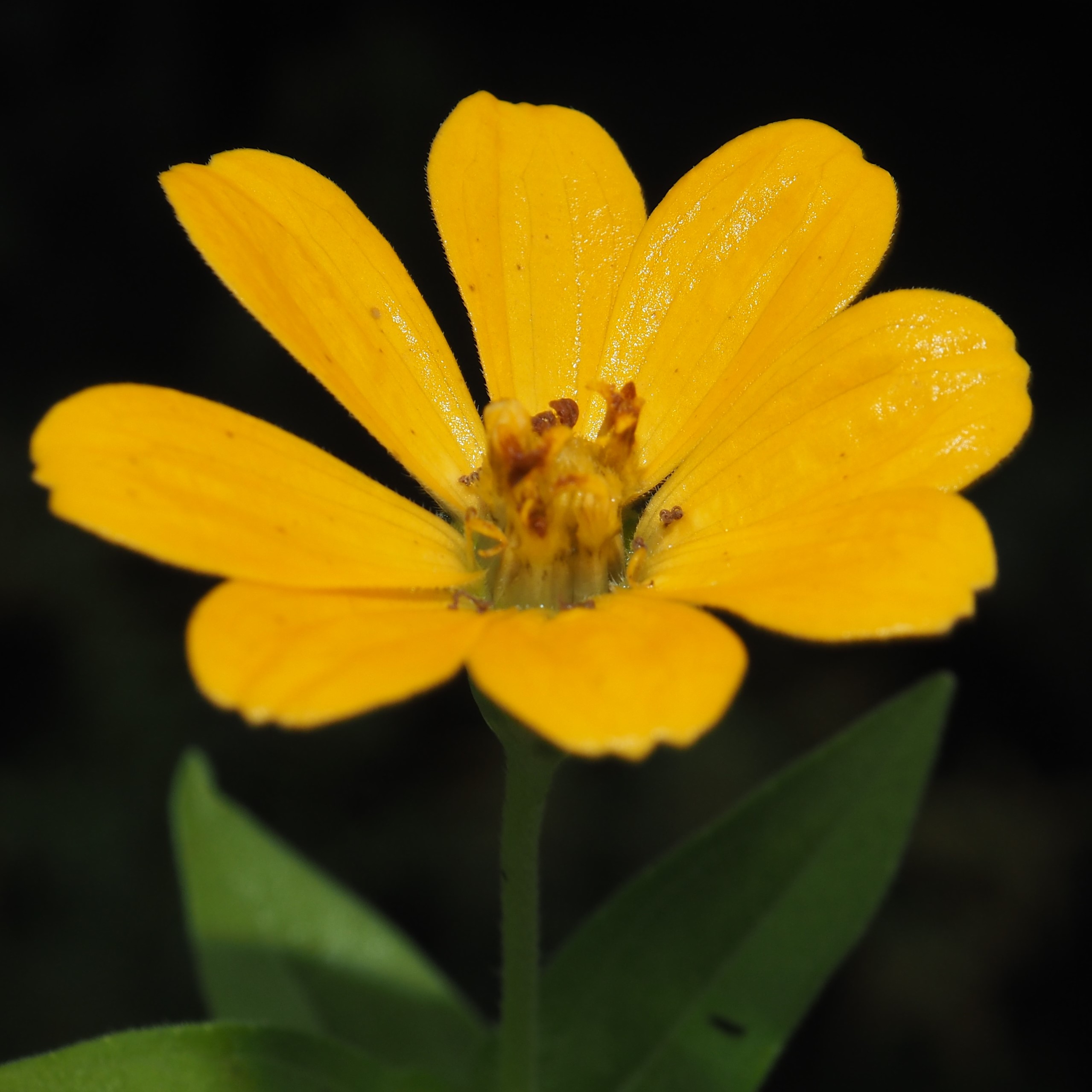
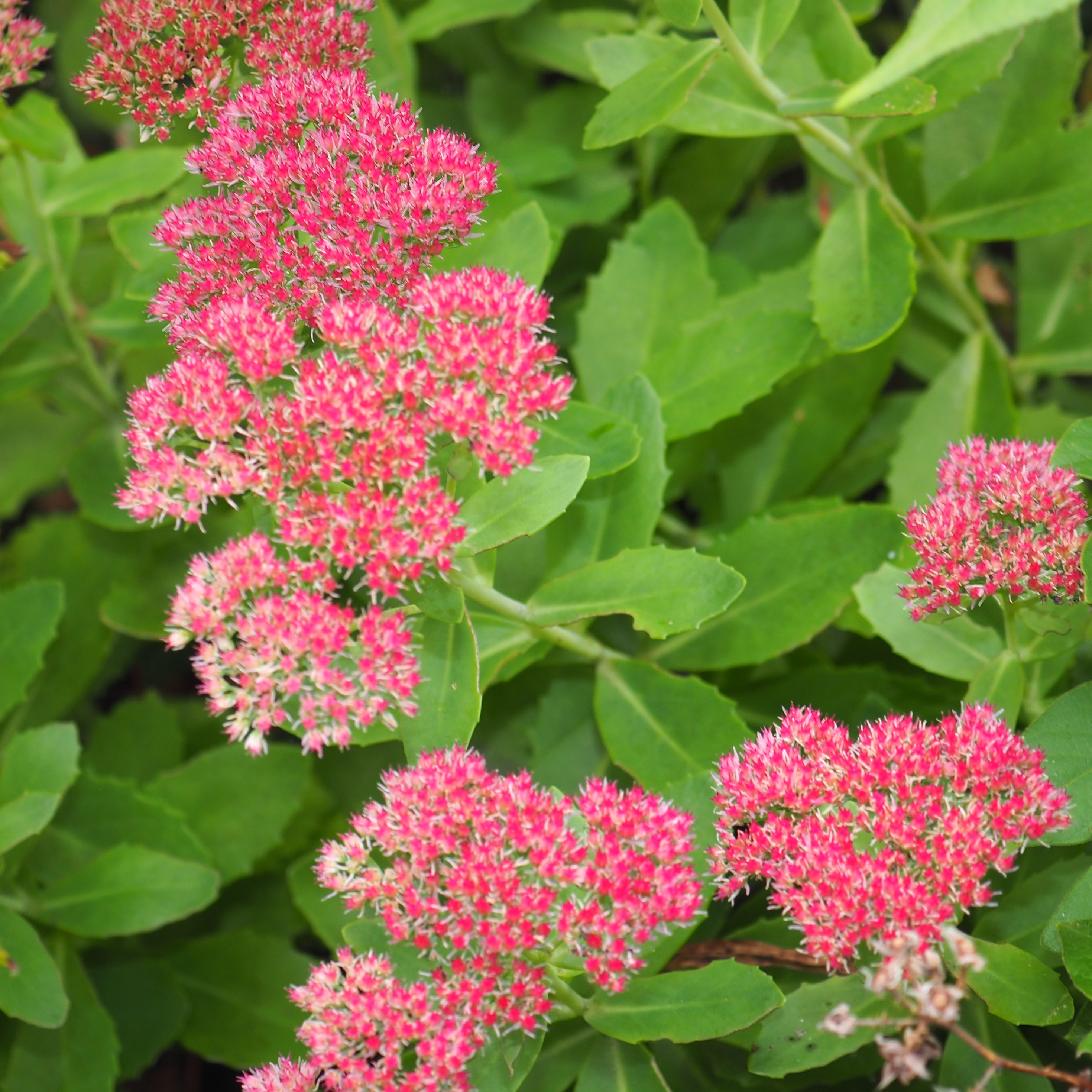
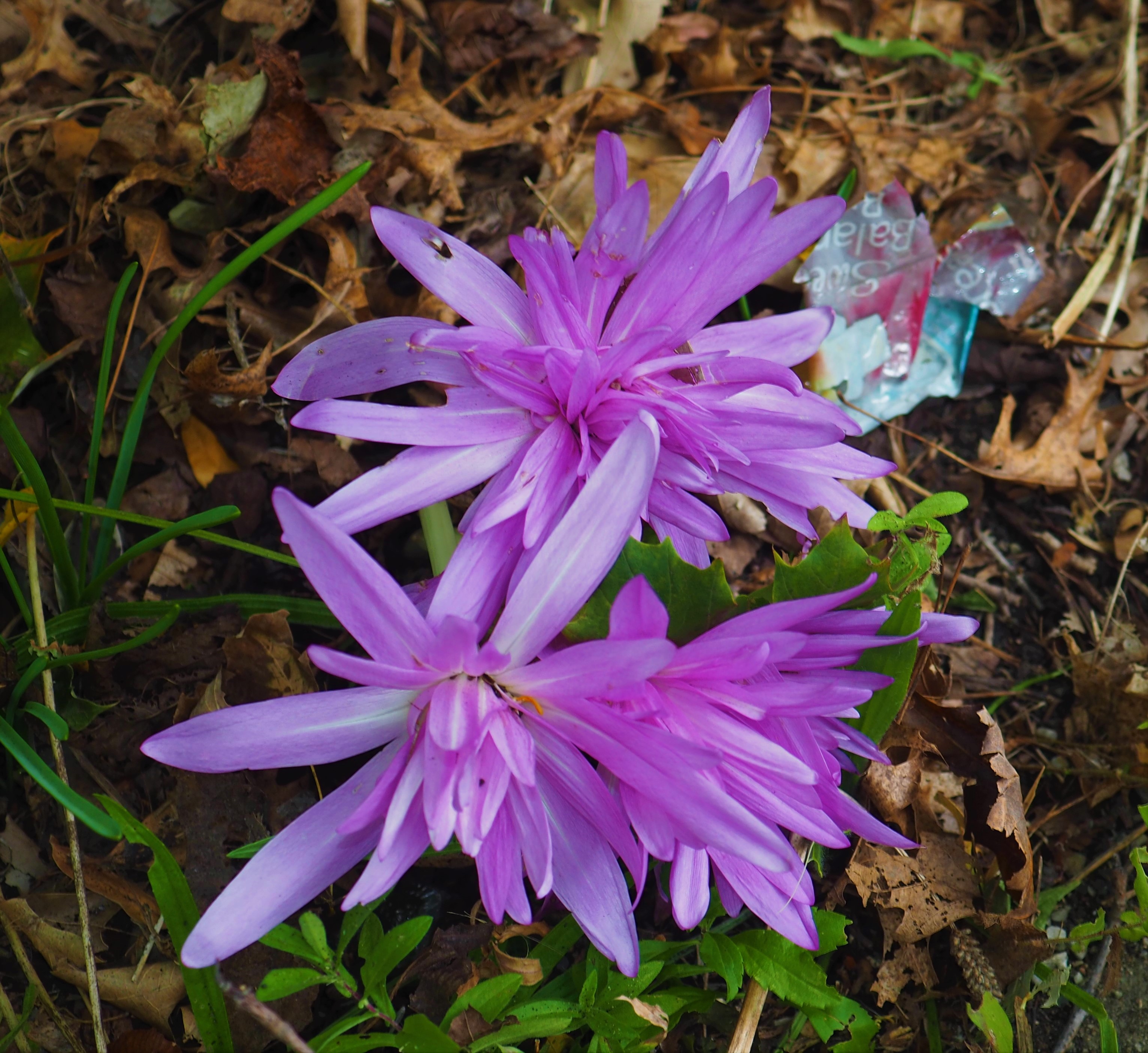
The Zinnias are still just barely making it. Note to me for next year: pick a type that is shorter and will not take so long to start working! But I love this yellow one. The Sedum Autumn Joy is getting pinker and pinker and maybe it's even getting some tinges of brown in it. The colchicums were the most bodacious this year of any since I planted them more than 10 years ago. It's October already and the heat is on. The Goldenrod is getting browner and browner and less and less full of beautiful wasps and other things.
Remember that there is information in the name of the file for each image. You can see it by mousing over the image - look at the lower left of the screen. Or you can click on the image to get to the (usually) larger image. Then the info is displayed in the address line above. Sometimes the second click will actually display a different view of the original image.
ting
The Ants were sparse in numbers of species but we had another visit from winged Queens. There were three or four of these - they look huge in these pictures but they were actually only about a quarter-inch (6 mm) long. when Steven Wang of iNat told me they were Queens of the tiny Hairless Rovers, I could hardly believe it. Look, here is the Hairless Rover, which isn't much longer than a millimeter. Second is the Queen of the week. Like so many Ants, the different sexes may be different colors, shapes and sizes!
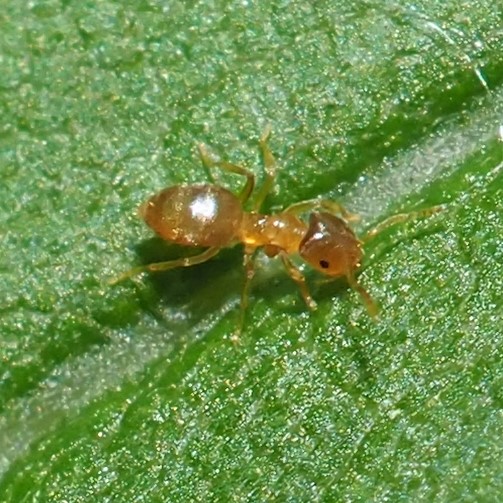
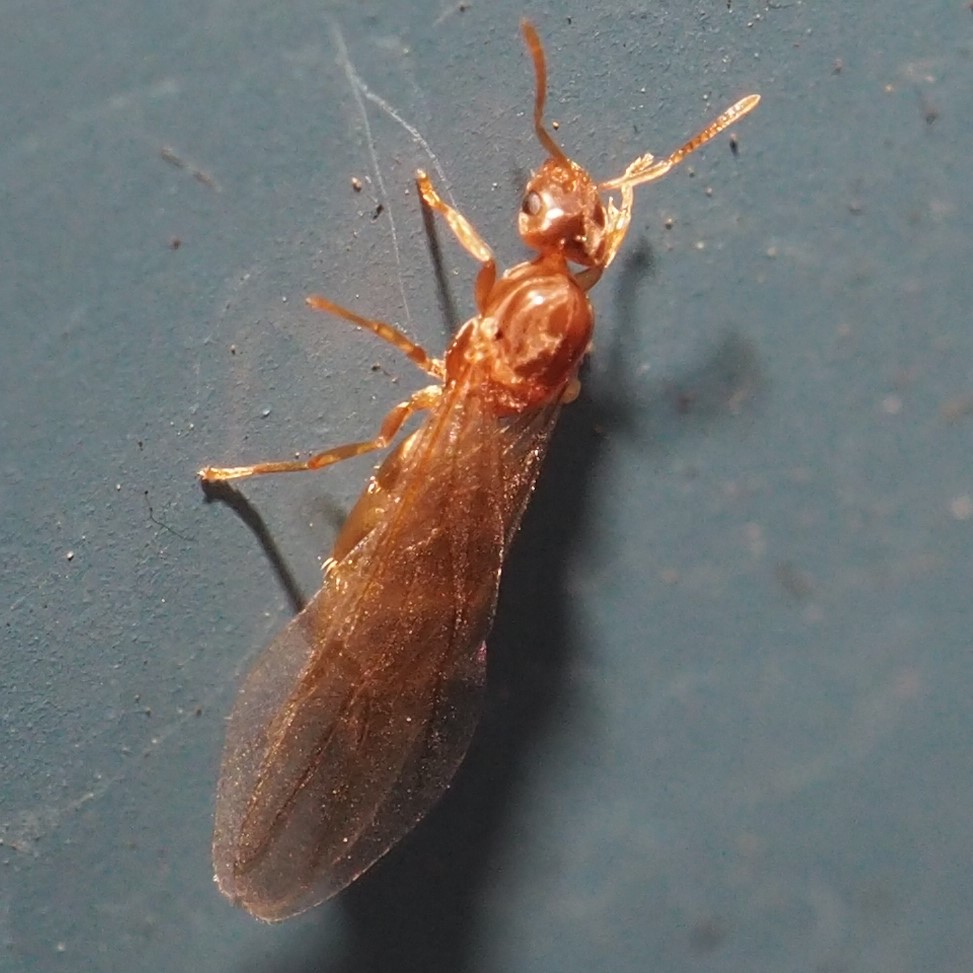
I'm going back to find a Queen of a couple weeks ago. Here it is, from September 23rd. Picture 1 shows an ordinary worker of this genus Myrmica, and picture 2 shows the Queen. They show nowhere near the great discrepancy of size between Worker and Queen. Going back another week, we find another Queen, but it is of an Ant we've never seen before, Ponera pennsylvanica. Picture 3 shows that Queen. That's three Queens in three weeks. If we were out there 24 hours a day, I wonder how many other examples we would have found. It does seem to be swarming season!
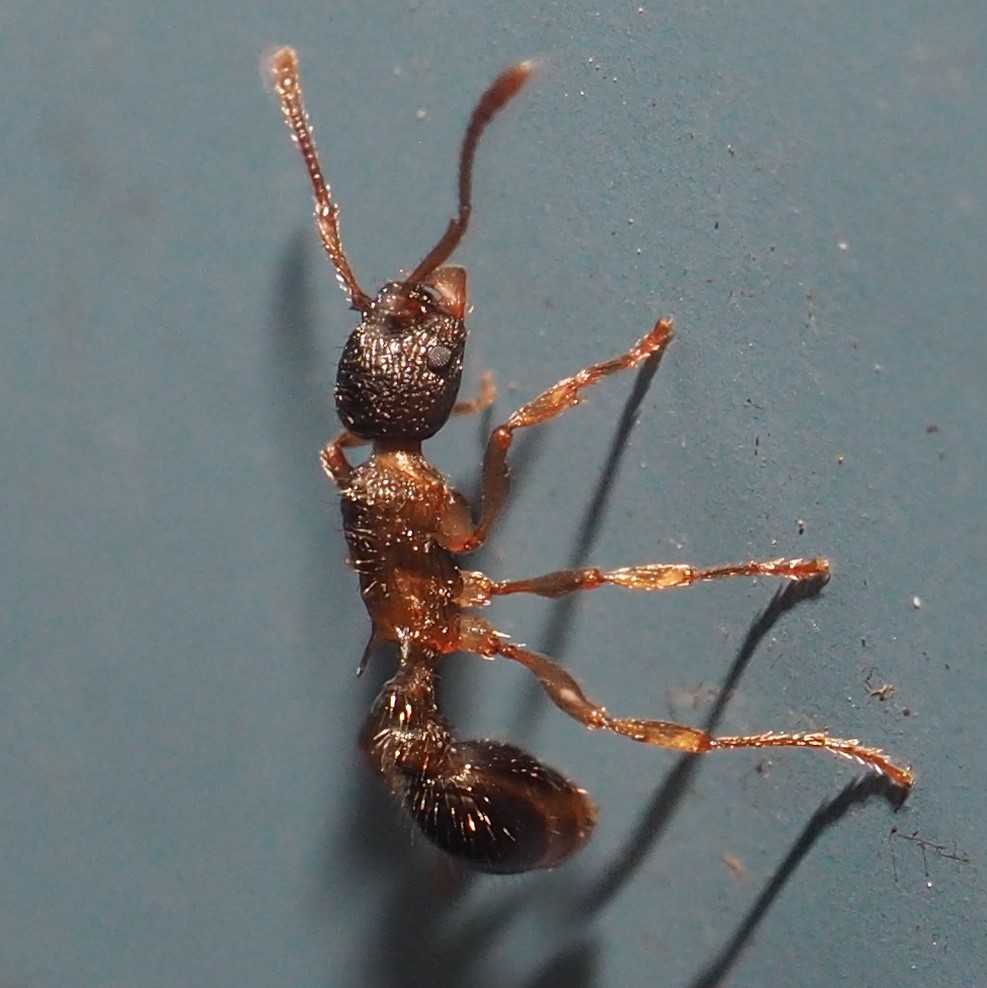
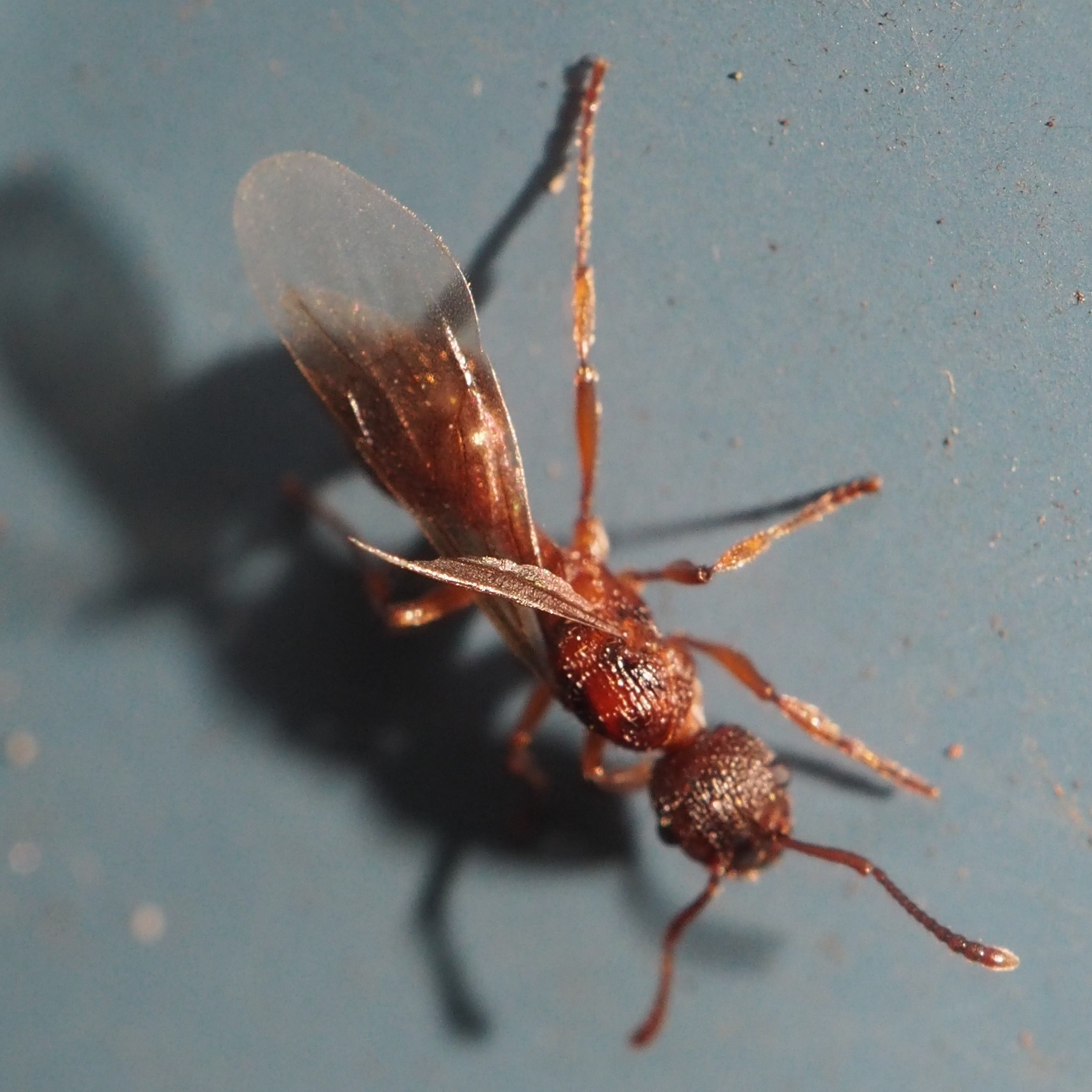

If there had been any Aphids out there (in my line of sight) you would be seeing them here. I had one potential Aphid but it turned out to be a Psyllid. Maybe I haven't showed pictures of the difference between the wings of an Aphid and those of a Psyllid. Now is a good time. First up, a red Aphid. Note the curve of its wing and compare with that of the Psyllid (picture 3). Another thing that often works: if you can see the rear end of an Aphid, note that it has two little black "sticks" poking out (picture 2). Picture 4 shows the dorsal (top) view of the Psyllid, whose name is Phylloplecta tripunctata.
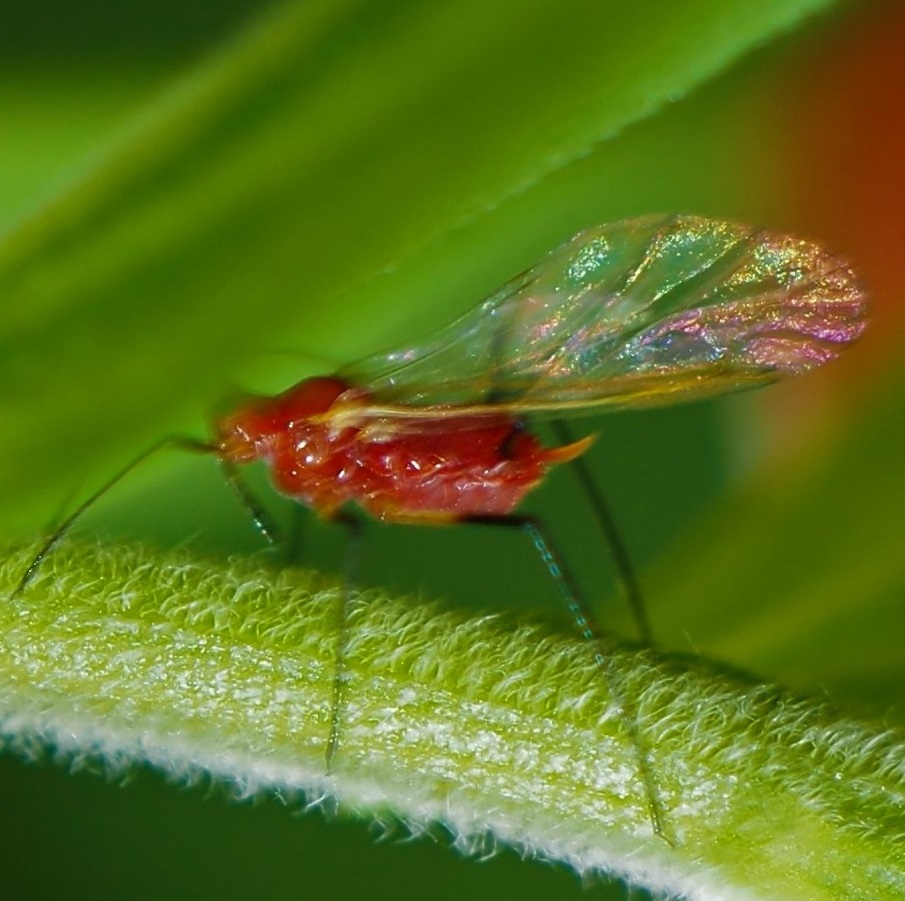
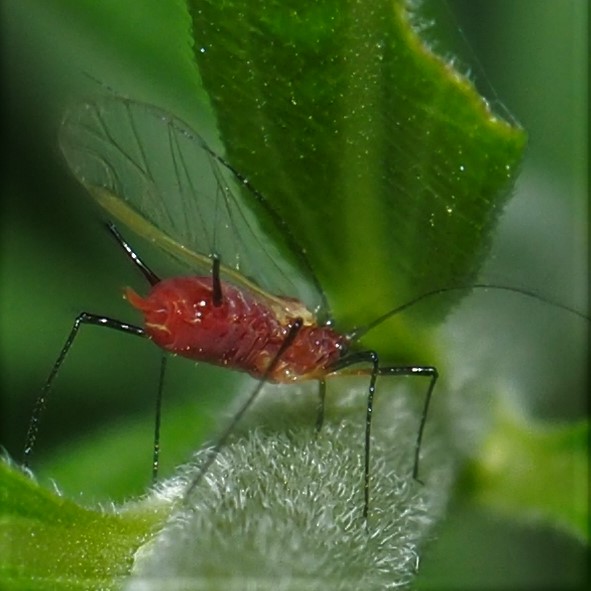
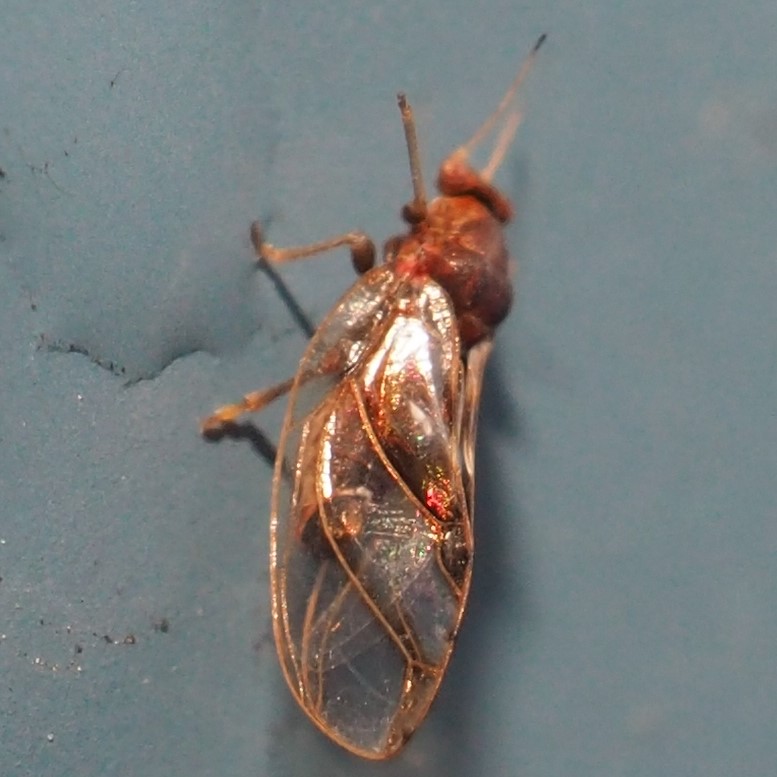
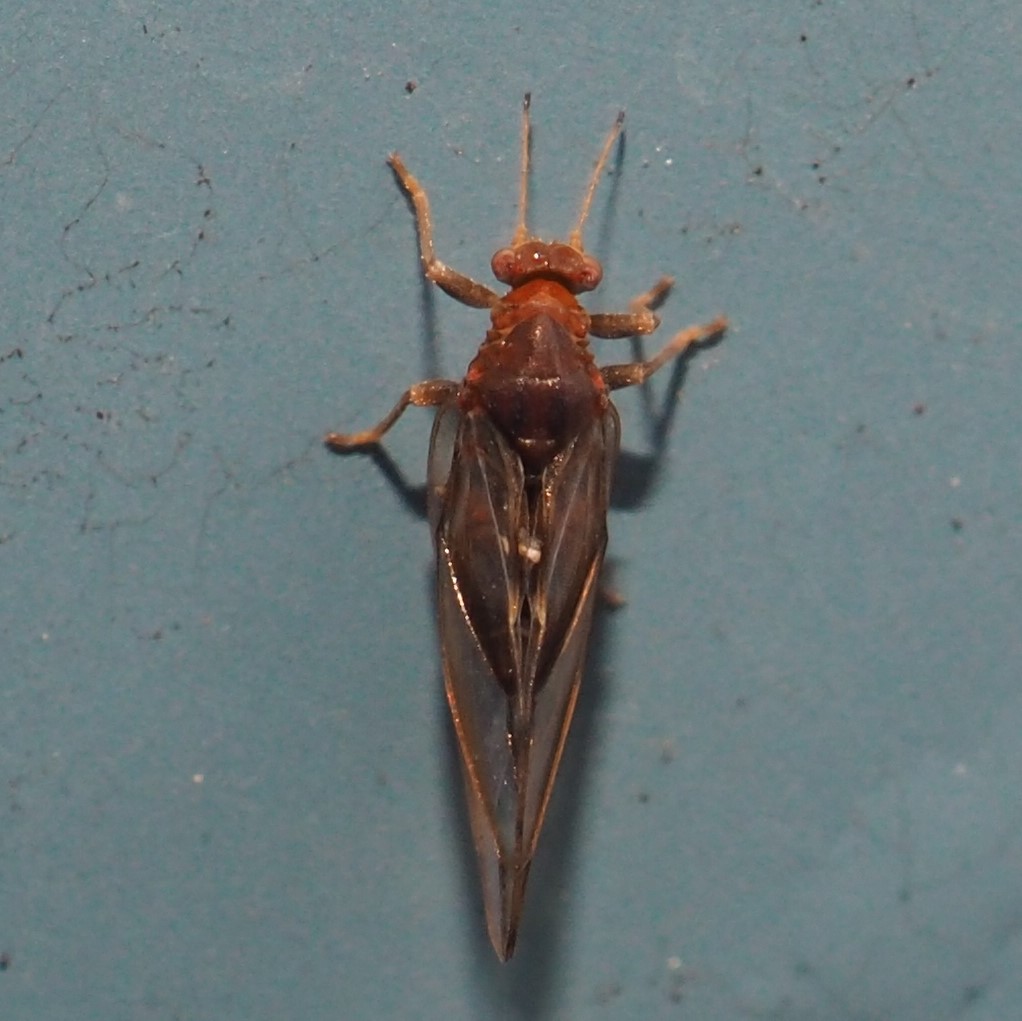
Let's segue into the Barklice. Echmepteryx hageni was one of the most common, adult or nymph. Now the nymphs seem to have turned into adults, but here is a picture (picture 2)from September 22. I do wonder what this weird thing is that I found hiding under the shop edge (picture 3). I also wonder what the tiny bug is just behind the weird thing.

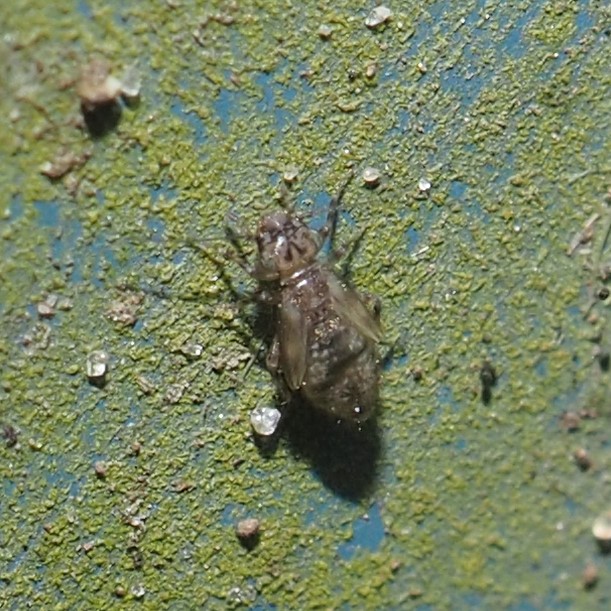

There are still quite a few Ectopsocus meridionalis egg clusters on the lower North Wall, but a big rainstorm the other day seems to have washed a lot of the adults away. The oldest set of eggs on panel 8 has held its own so far. There are also a few nymphs here and there. Panel 8 still has some nymphs on the right side. Picture 2 shows the collection on September 29, and picture 3 shows a few on October 2.

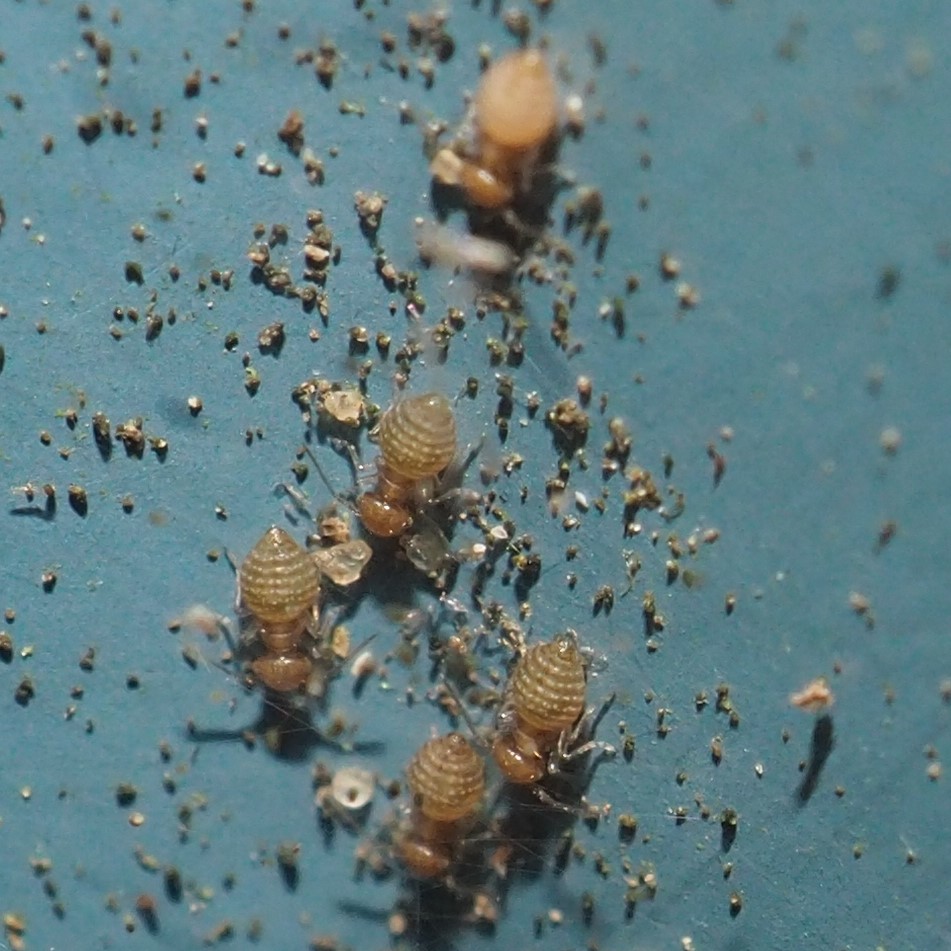
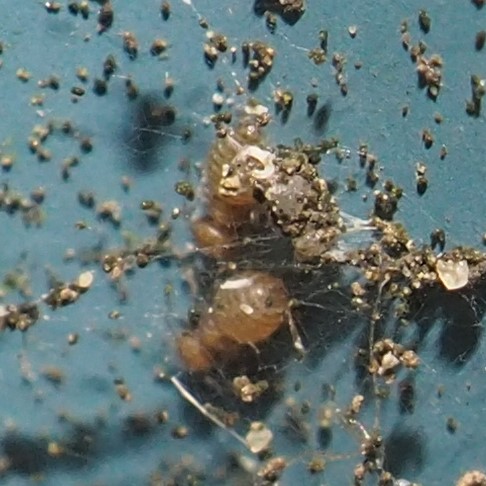
First, a Graphopsocus cruciatus nymph. Second, a newly-emerged adult with its colors only starting to show up. Third, a black-eyed adult. (Some come with black eyes and some with grey.)
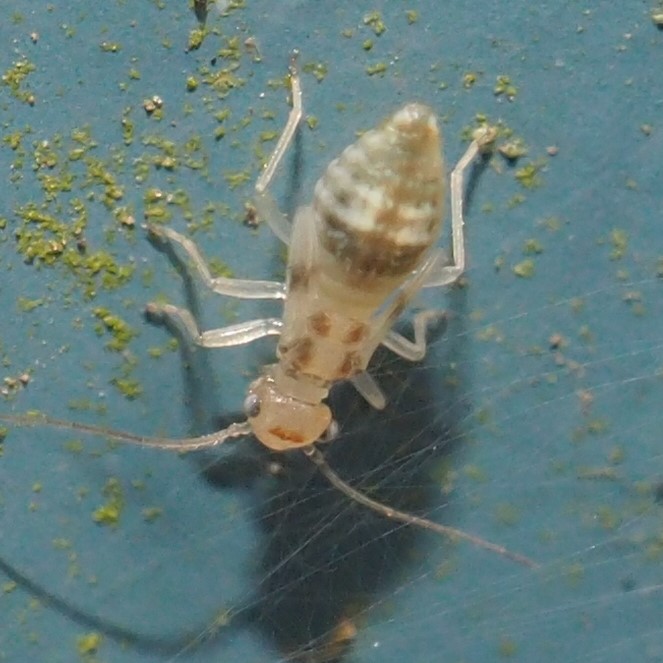
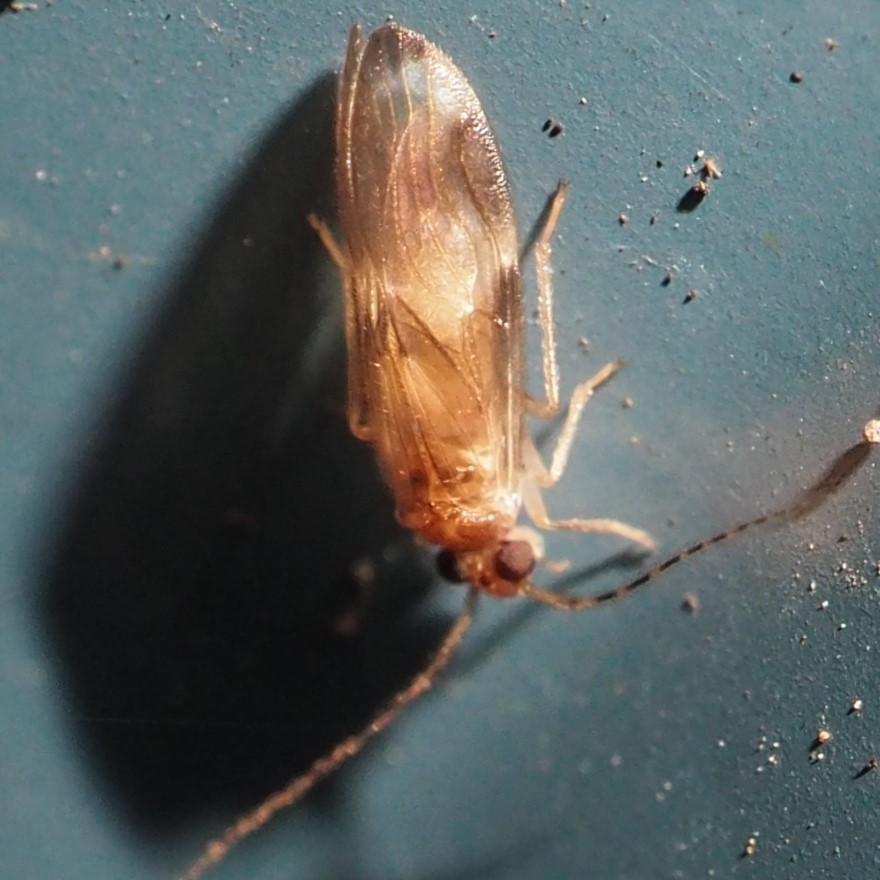
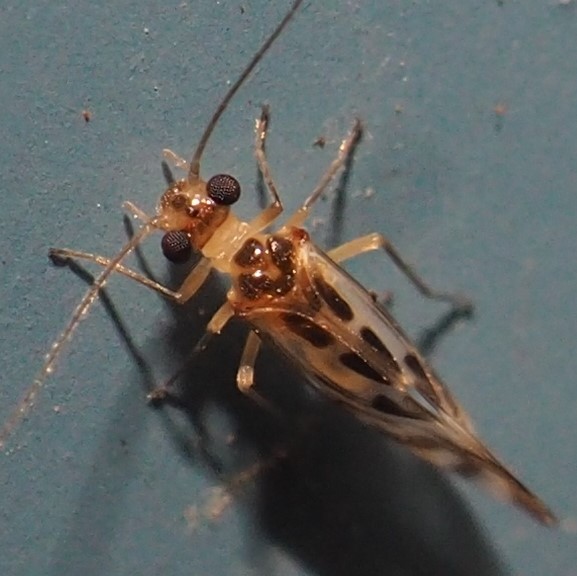
This red Lachesilla (a Fateful Barklouse) appeared on the wall on September 27. The same day this Loving Barklouse, Aaroniella badonneli, appeared (picture 2). This grey-winged one was immediately identified by Diane Young, member of the Psocid Society of BugGuide, as a female Indiopsocus bisignatus.

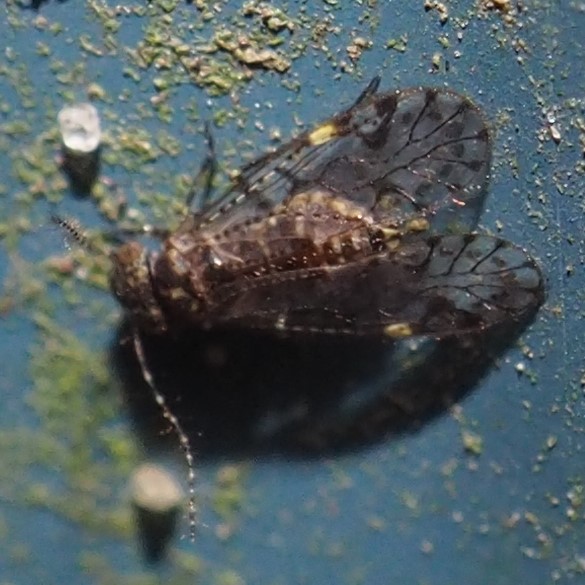
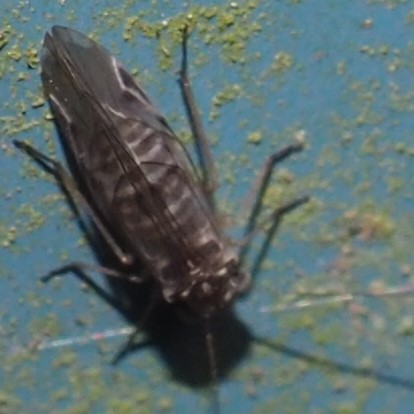
Here are two more new or mystery Barklice. The second one (pictures 2 and 3) has the most amazing face!
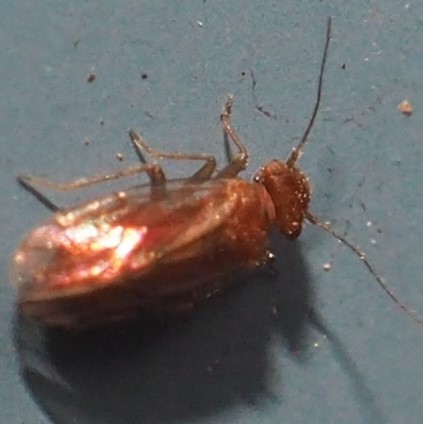
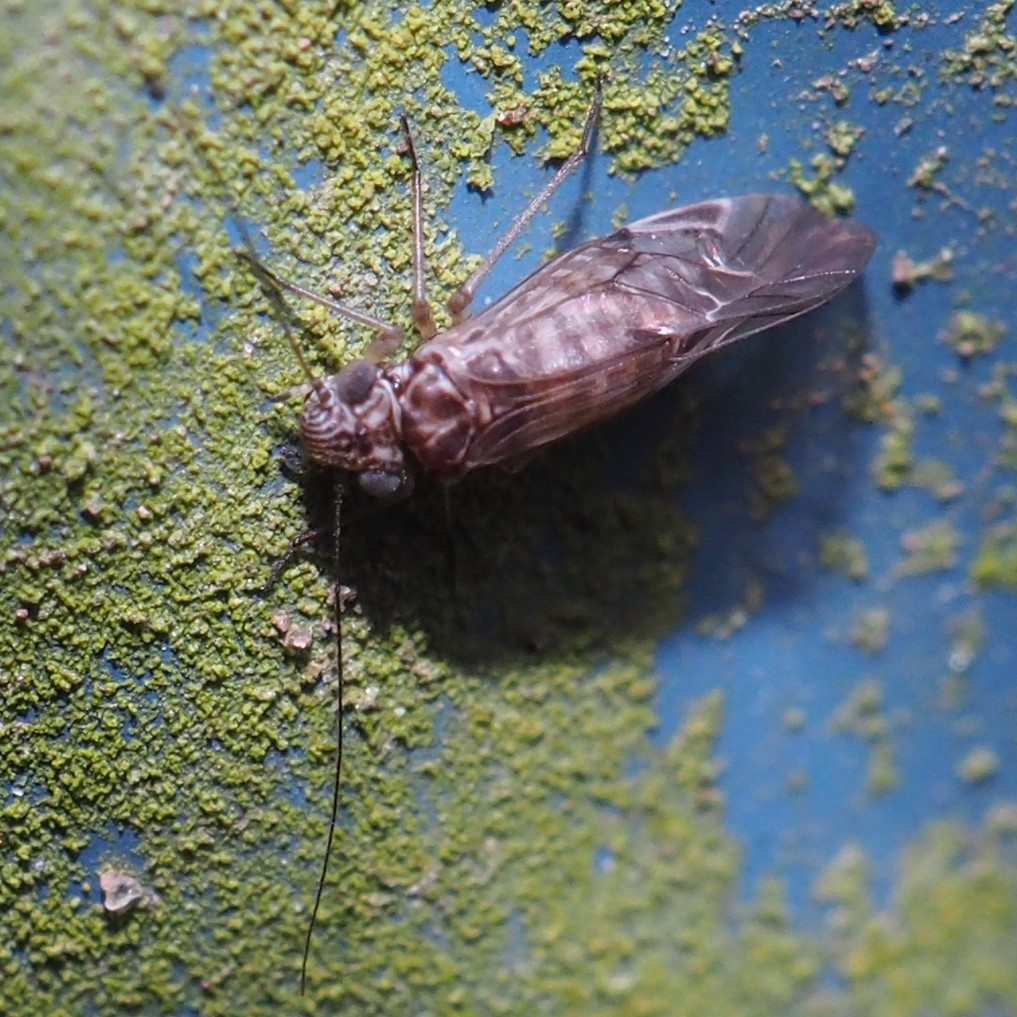

Here are a couple of Valenzuela flavidus nymphs from North panel 8, first on September 30 and second on October 1 on panel 3, and an adult found on the South Side on October 1.
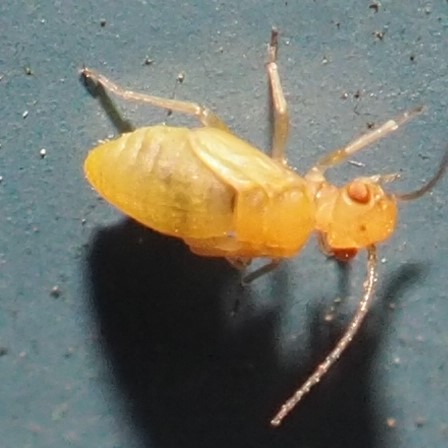
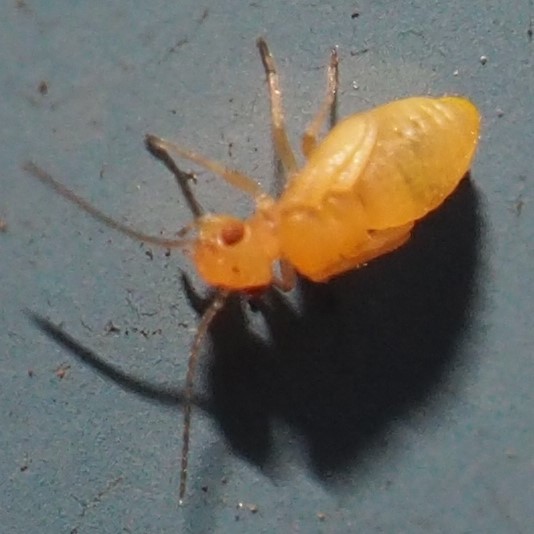
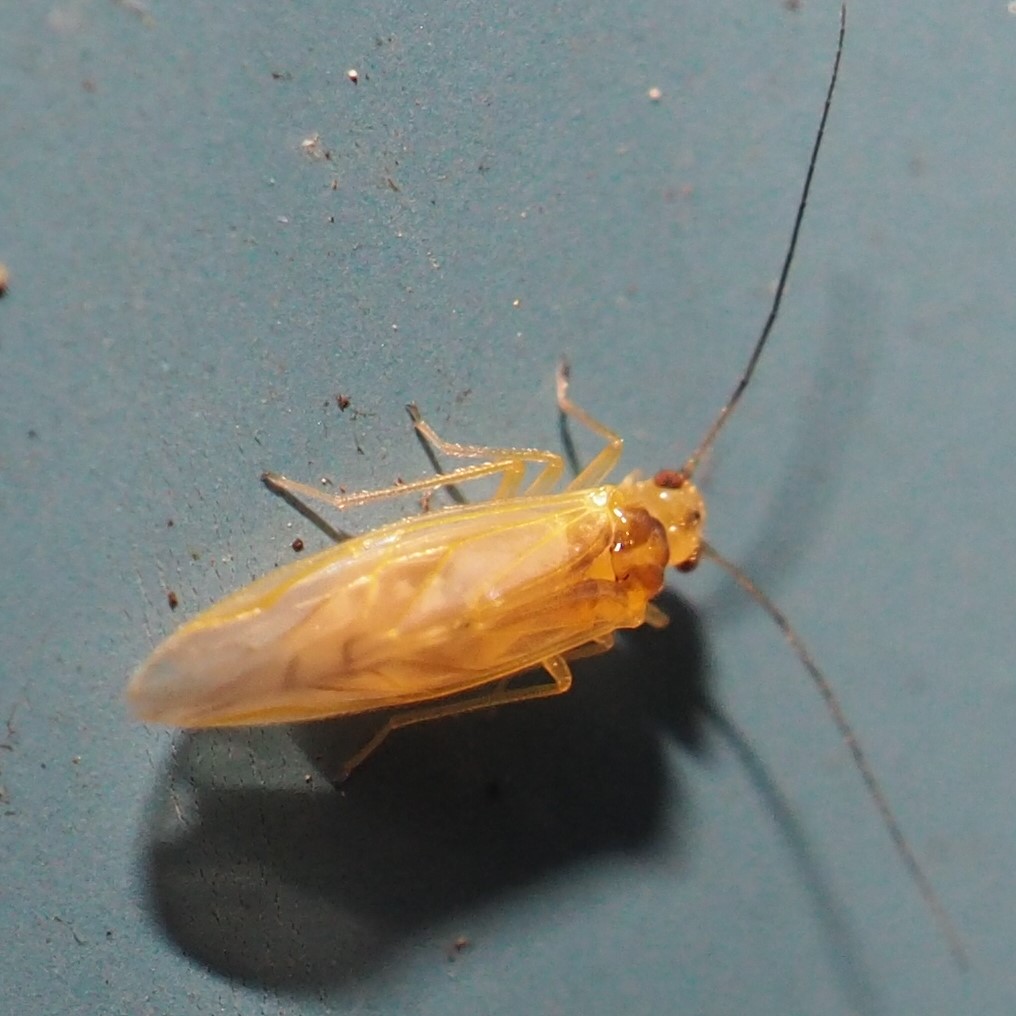
I was going to say I hadn't seen any Beetles this week, but today this thing appeared on the West Wall. I first suspected it was a Rove Beetle, one of those whose outer wings don't cover their nether regions. But Kyle Kittelberger of iNat convinced me it was in fact a member of the Genus Pissonotus of Delphacid Planthoppers!
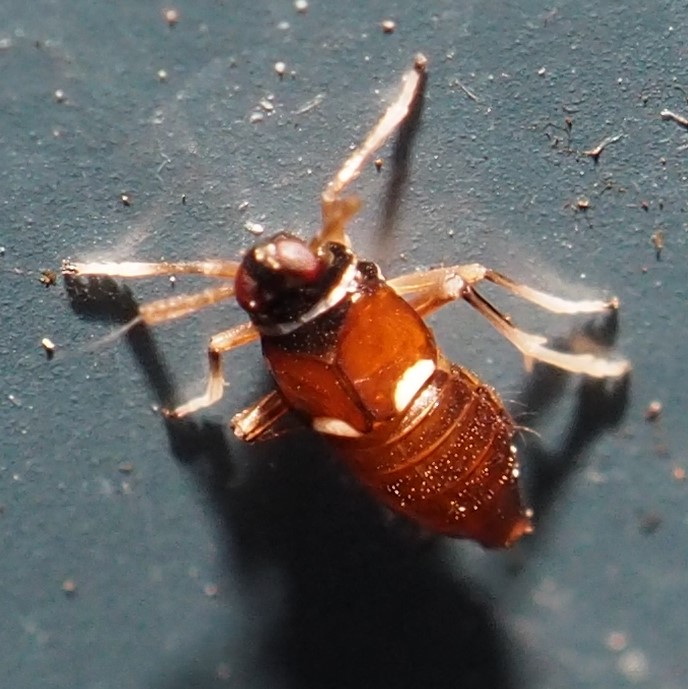
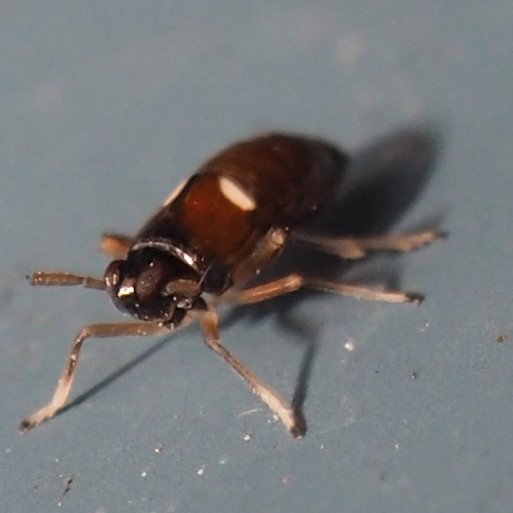
The Bugs keep delivering. There are still baby Assassin Bugs (Zelus luridus) around. Meanwhile, there are still plenty of Leafhoppers - amazingly since I think of them as a midsummer phenomenon. That must have been a mistake! Here's a bit of a surprise - it looks kind of like a frog, but it is the nymph of the Leafhopper, Agallia quadripunctata. And one of my favorite Leafhoppers, Erasmoneura vulnerata. I think it's wonderful for its colors and clean lines.
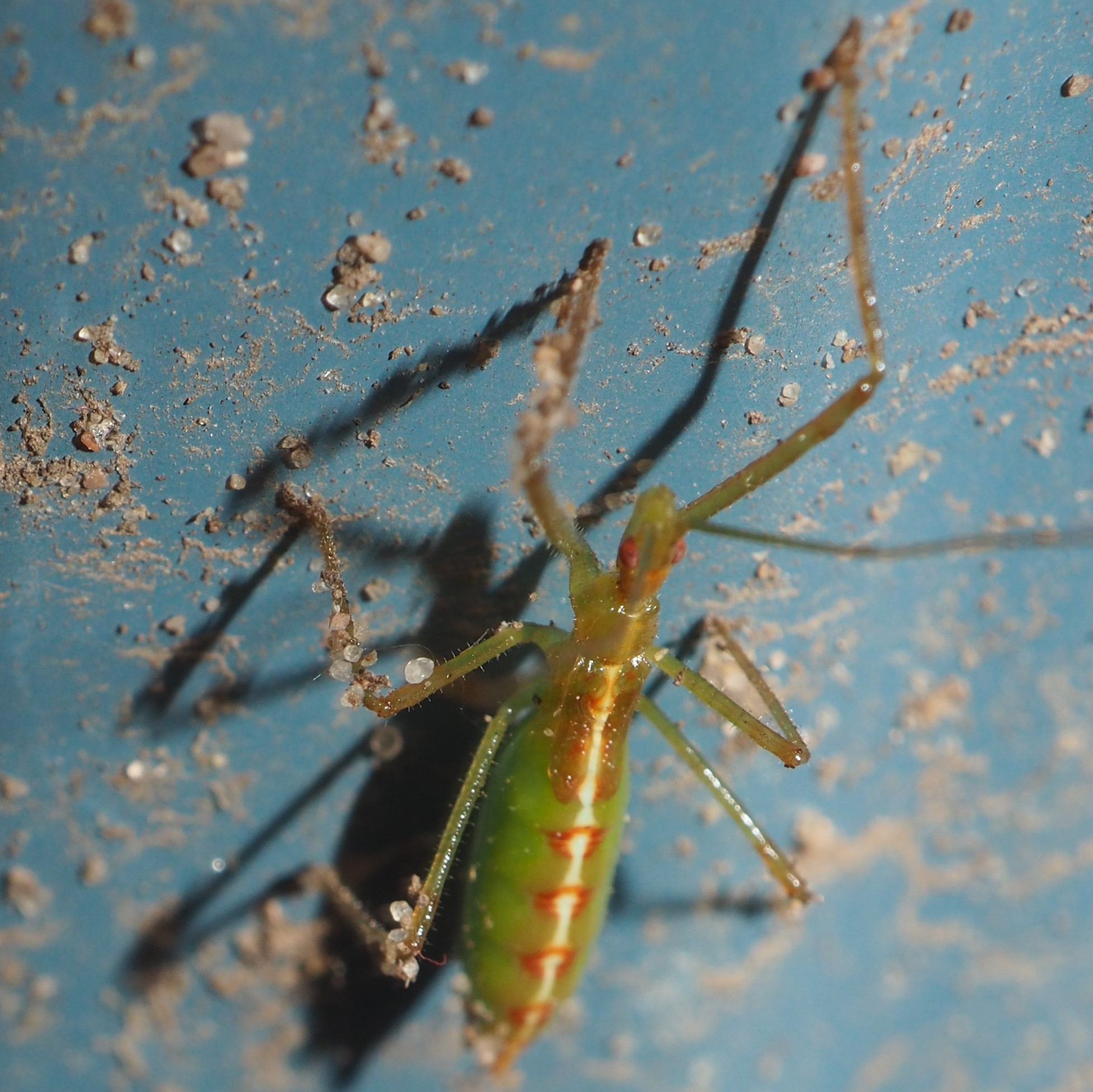

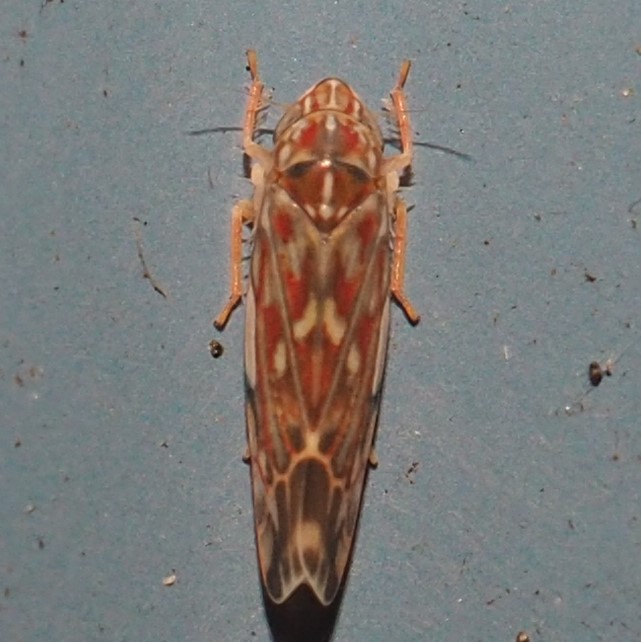
Here is one of the many manifestations of the Eratoneura genus. There are so many different patterns, many more than there are names for species! Second is Erythroneura palimpsesta, that very scarce Hopper. Not too many have shown up in iNat, though there are a few in BG. I'm so chuffed that it shows up in my yard every once in a while.
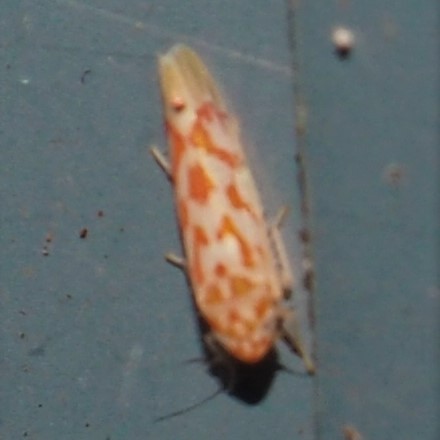
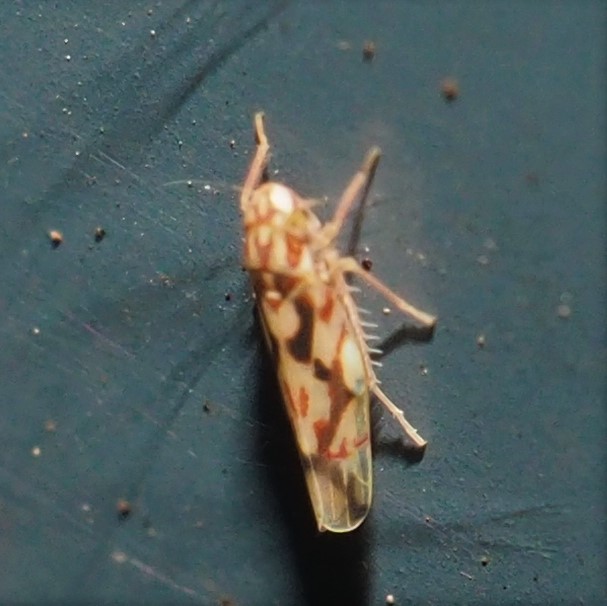
If you thought this next one was a Boxelder Bug, relax. It is only an Eastern Small Milkweed Bug. The heart-shaped black figure on its back is the giveaway. Pictures 2 and 3 show one of the many species of Lygus Plant Bugs.
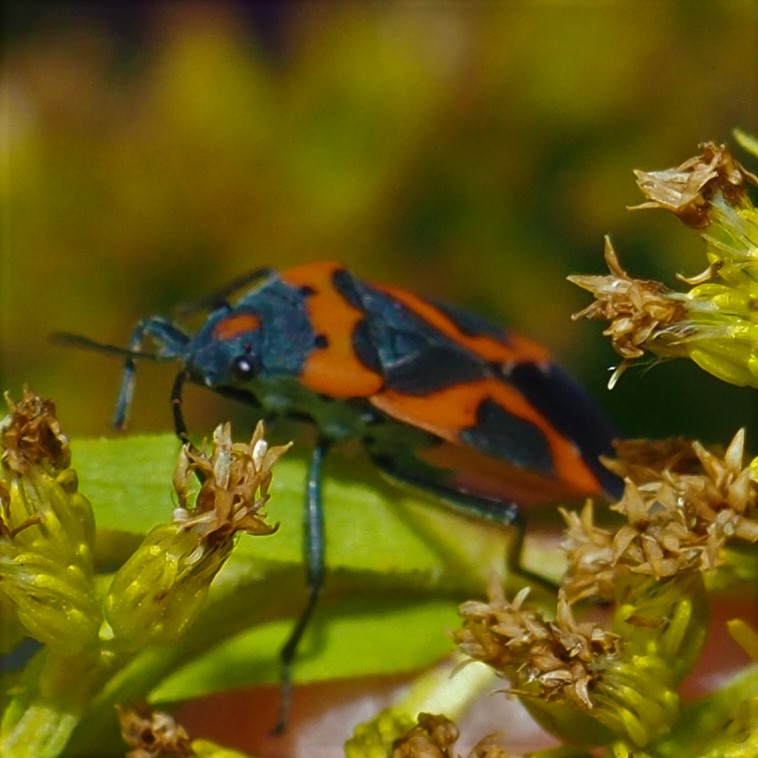
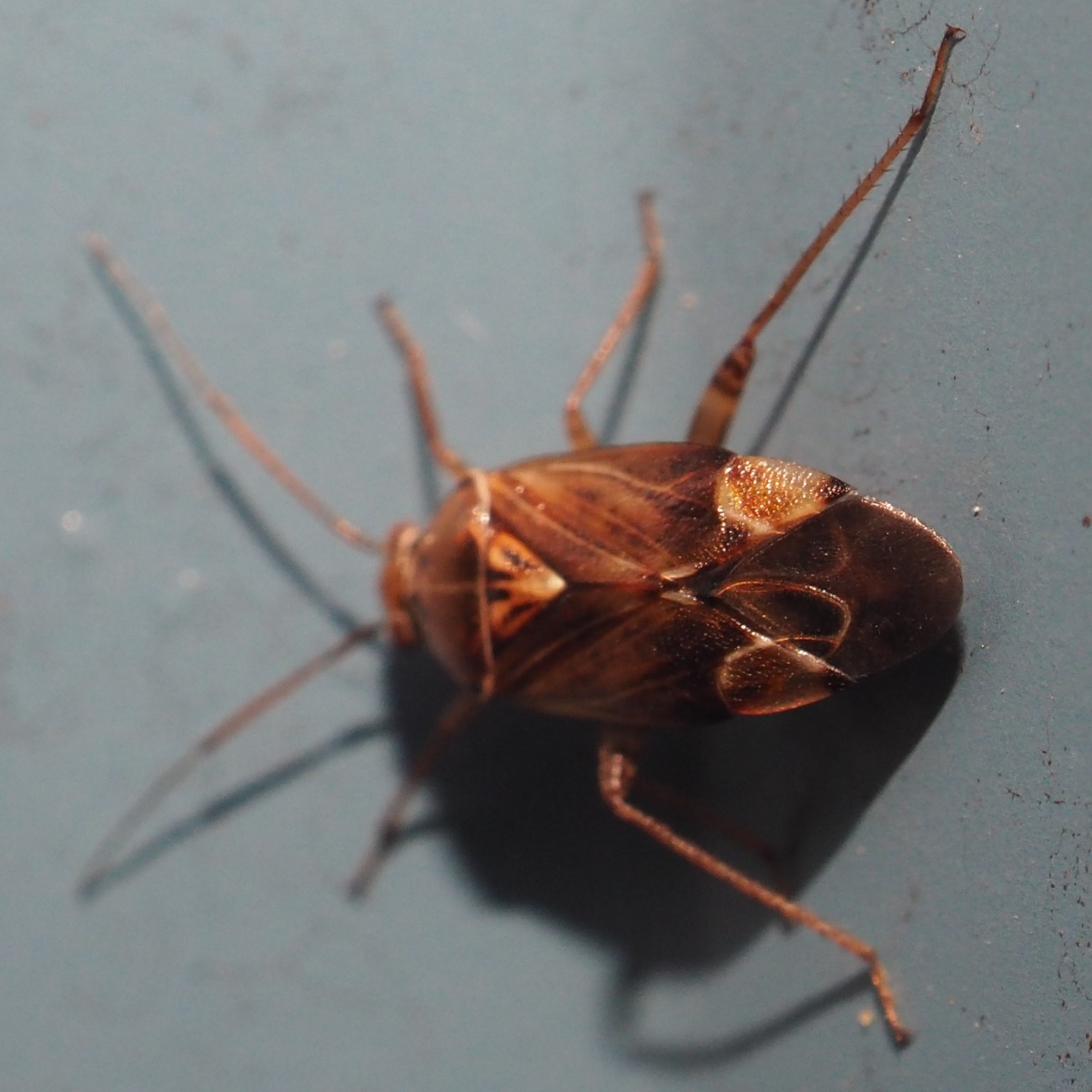

Trying to hide in the Goldenrod, here is another brand of Lygus Plant Bug. Second and third are two views of a Long-necked Seed Bug.
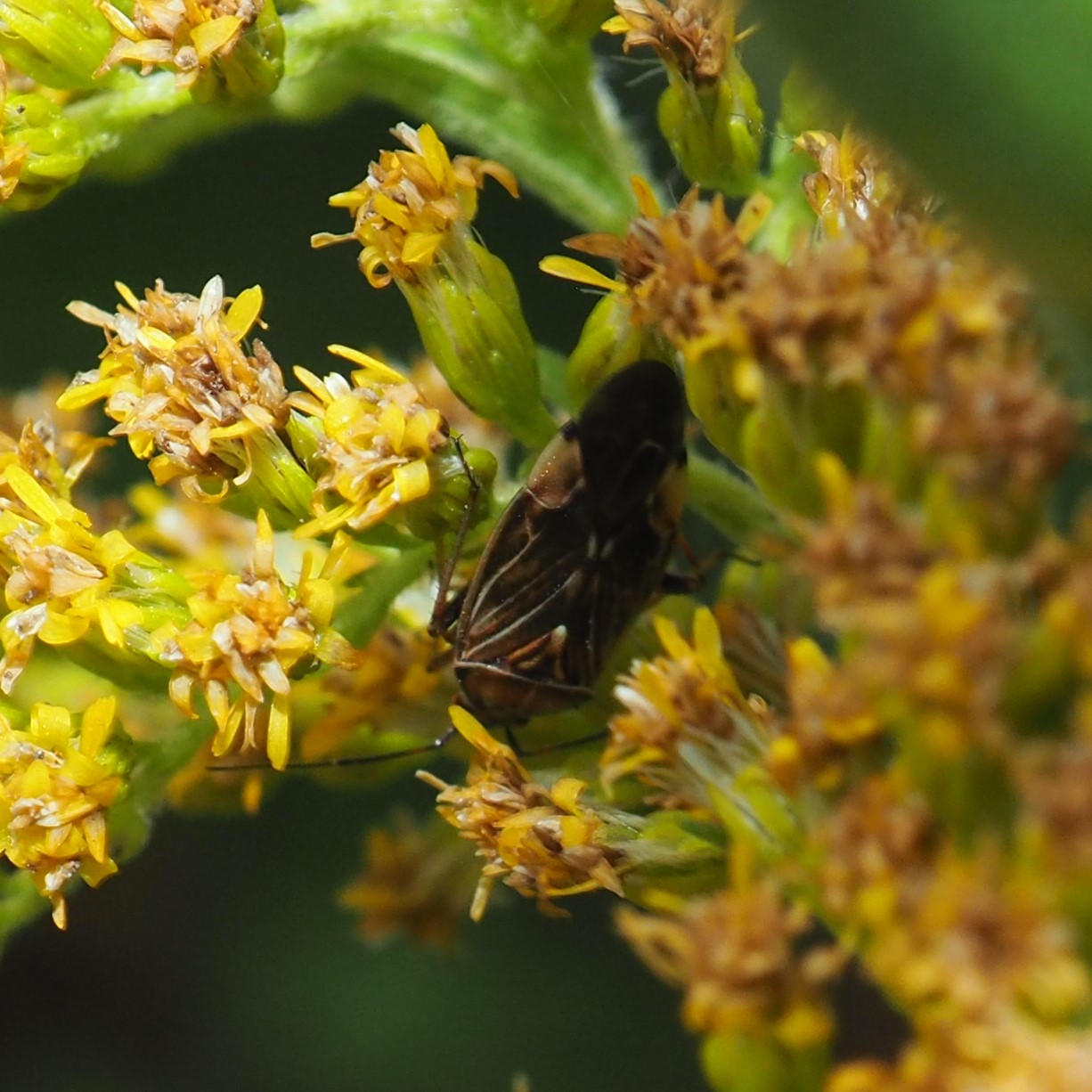
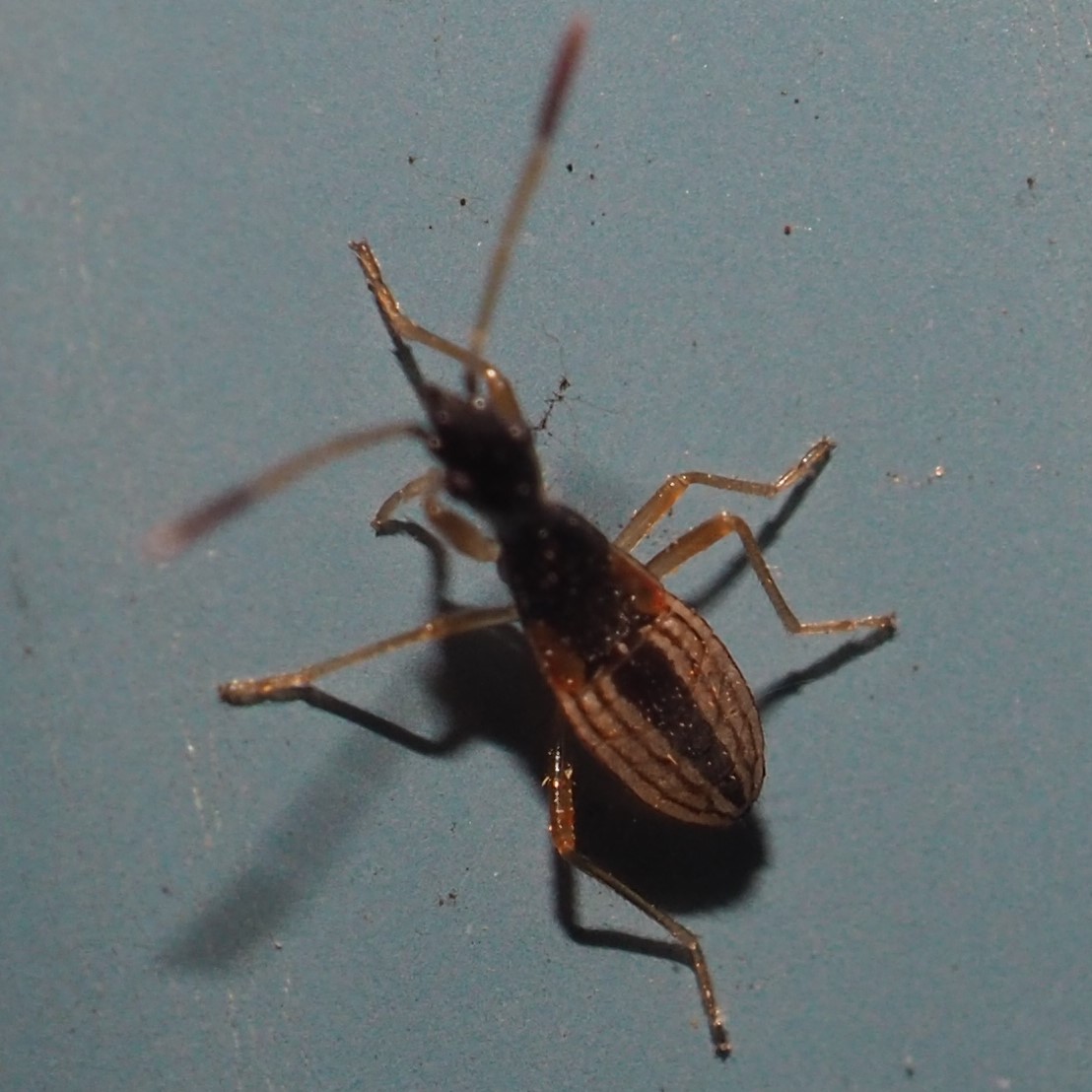

Next we get to the Crickets. First up, a Tree Cricket cuddling up in a crevice in the brick front of the house.
And then a Carolina Ground Cricket. Since we're still in the C's, here is a little looper (geometrid Caterpillar) in the South Wall.

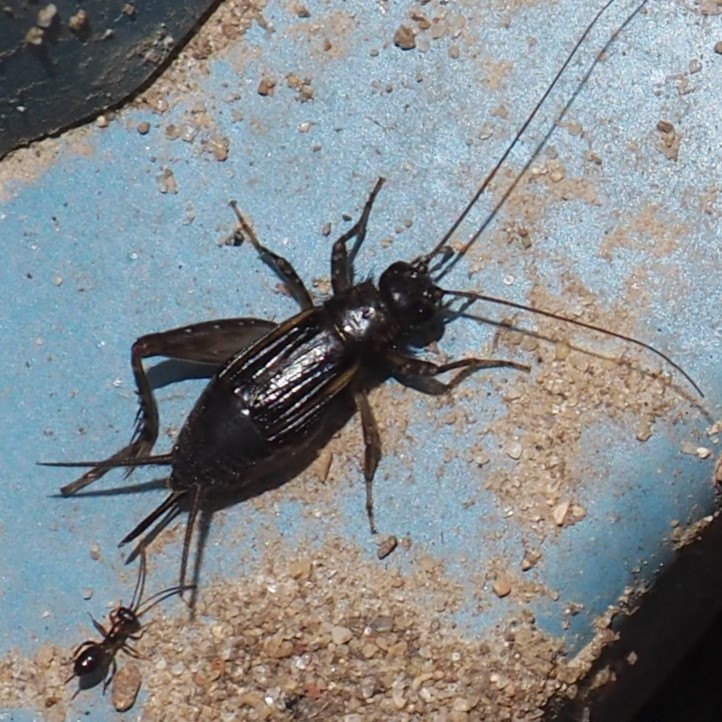

One Autumn Meadowhawk was found on the East Wall. And now to the Flies! I've always liked to show the Crane Flies first, as being close to the beginning of the alphabet. Usually it is hard to get an ID for these pretty little flies, but this gorgeous orangish one came up with a name, Cladura flavoferruginea. I went back in my records and found that this is the fourth year that it has shown up on almost the exact date. The fourth one is another Crane Fly but unfortunately I don't have a name for it!
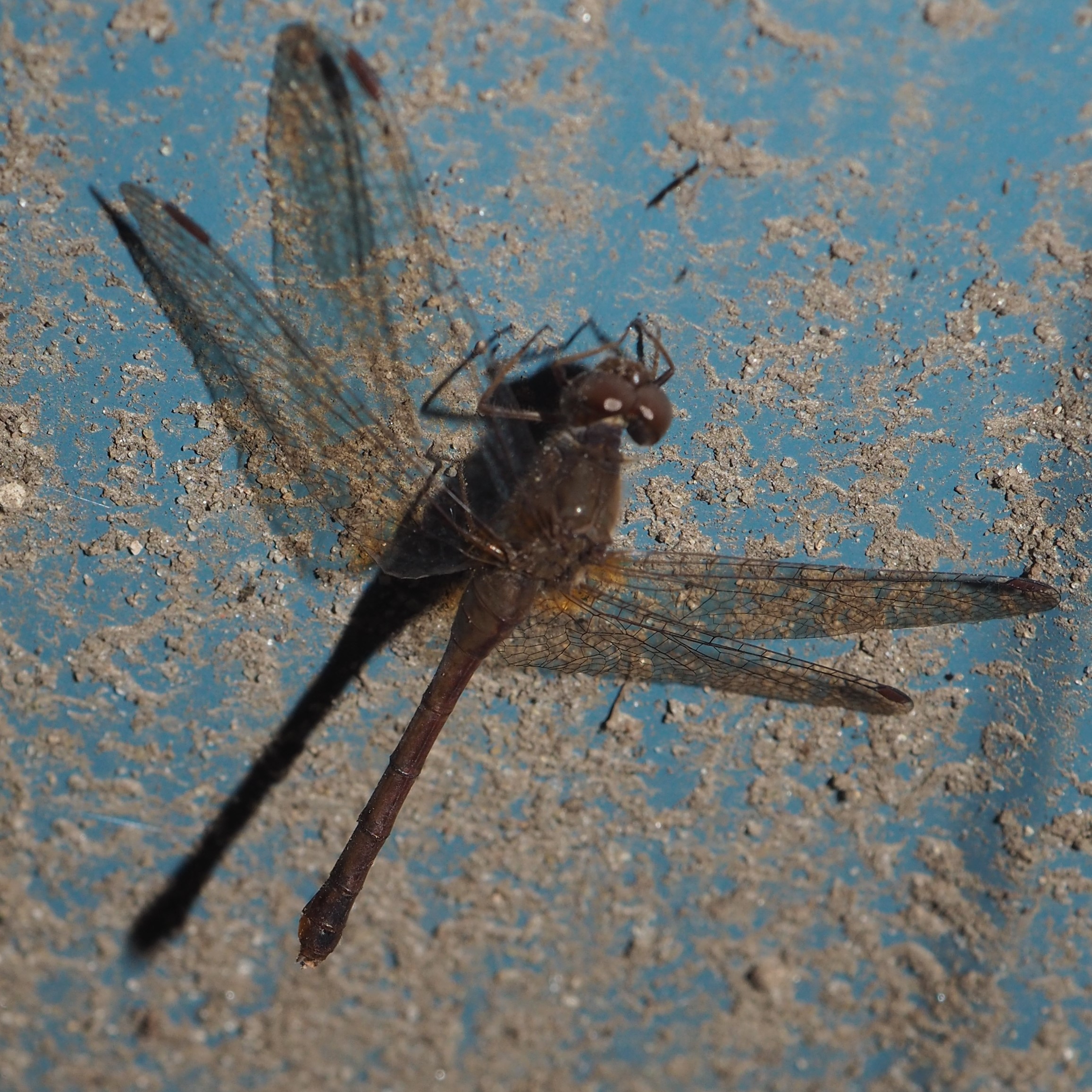
.jpg)
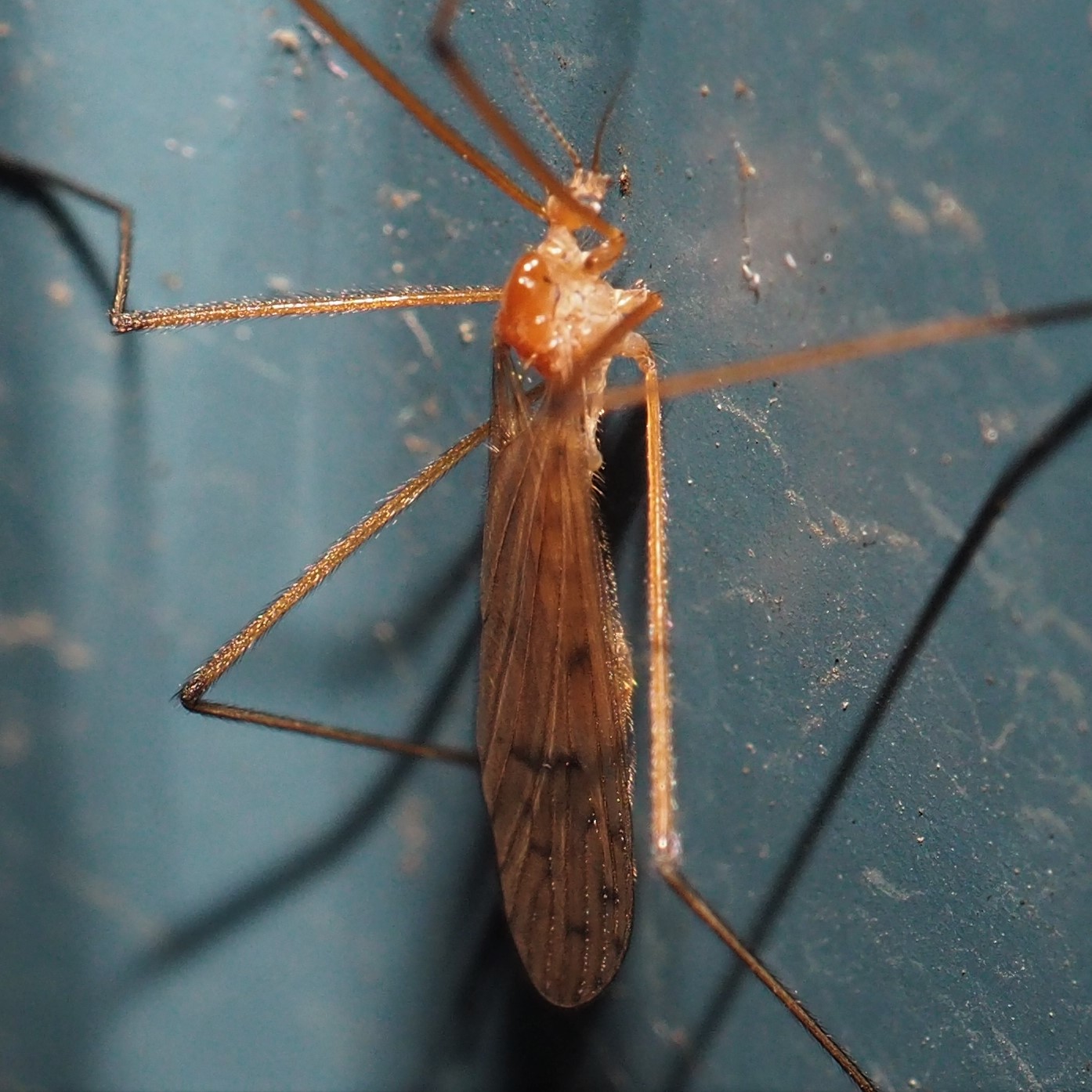
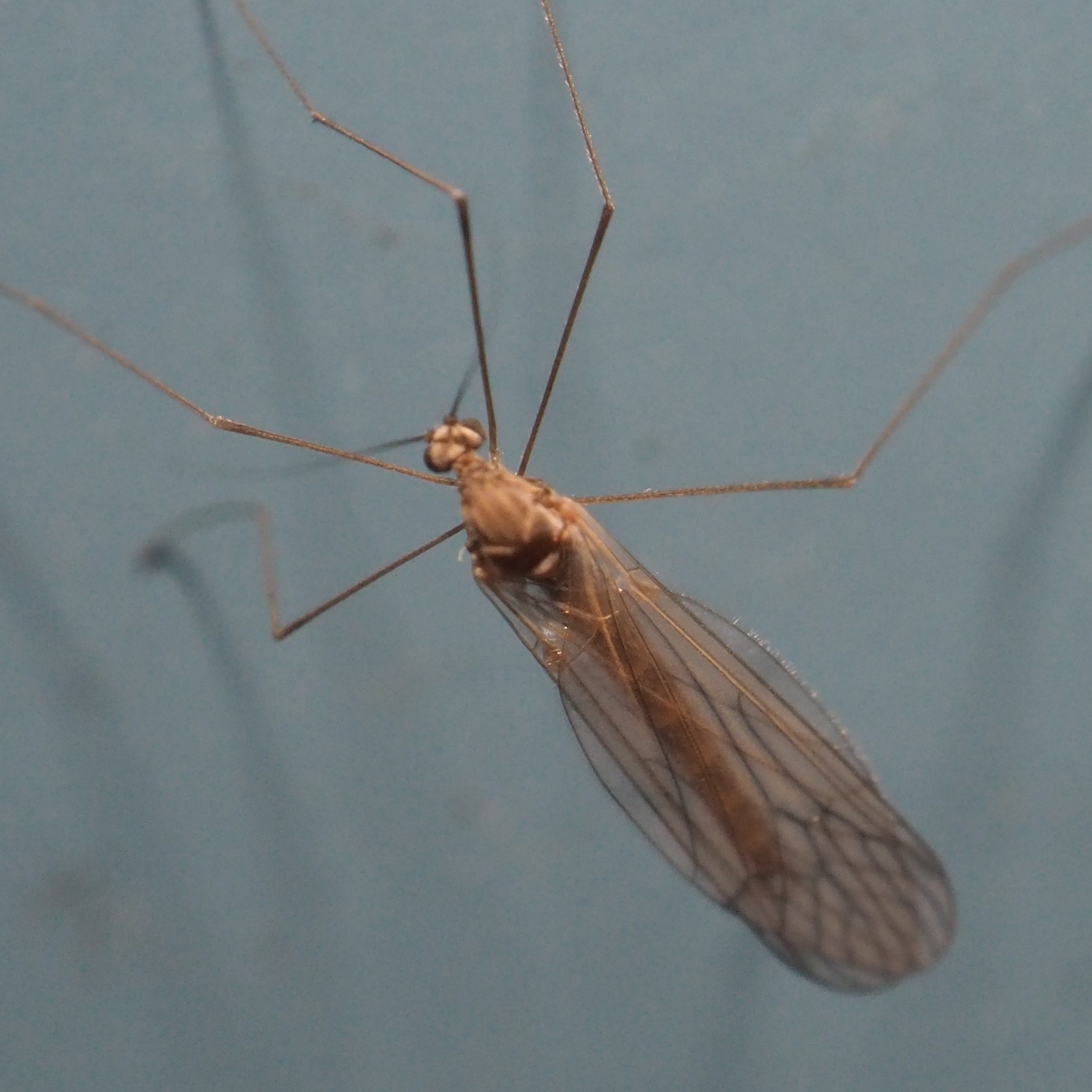
This next Fly is a rather more elegantly colored Fungus Gnat than the usual. Then we have a few Mosquitos. This first one is Anopheles quadrimaculatus. The next is the Asian Bush Mosquito, Aedes japonicus. The last one I suggested Ae. vexans.
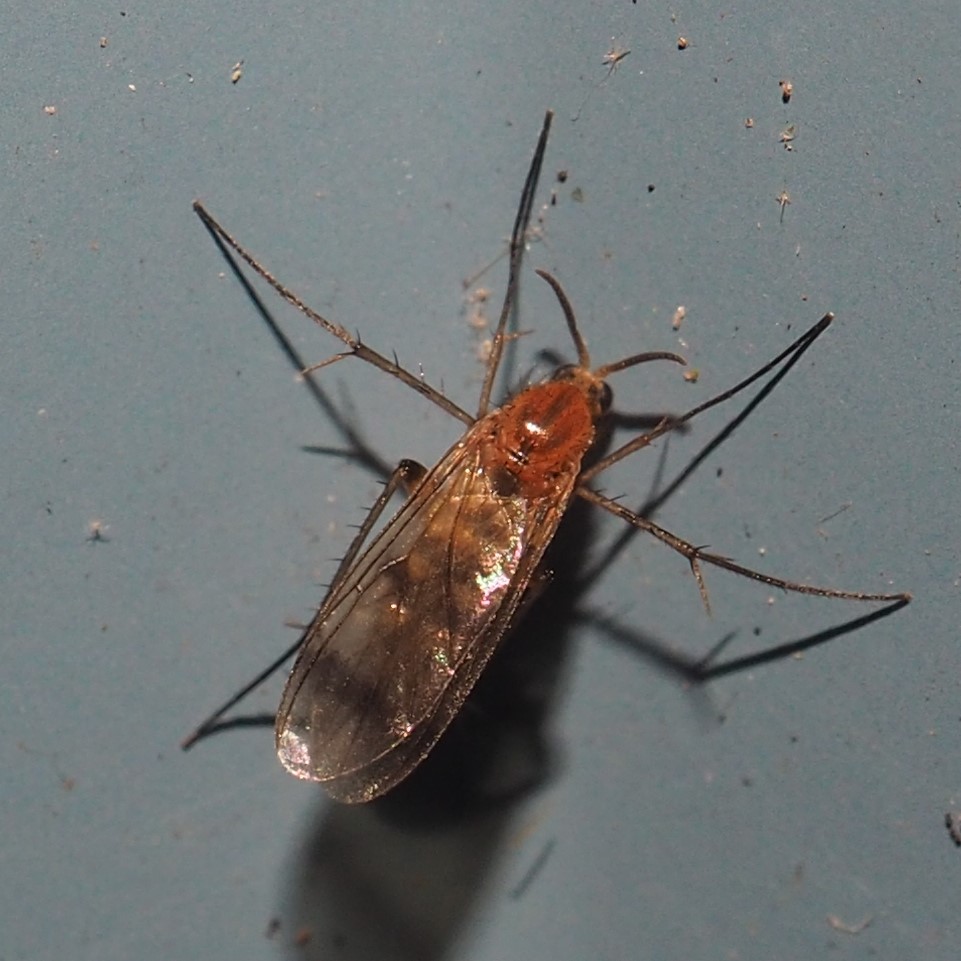
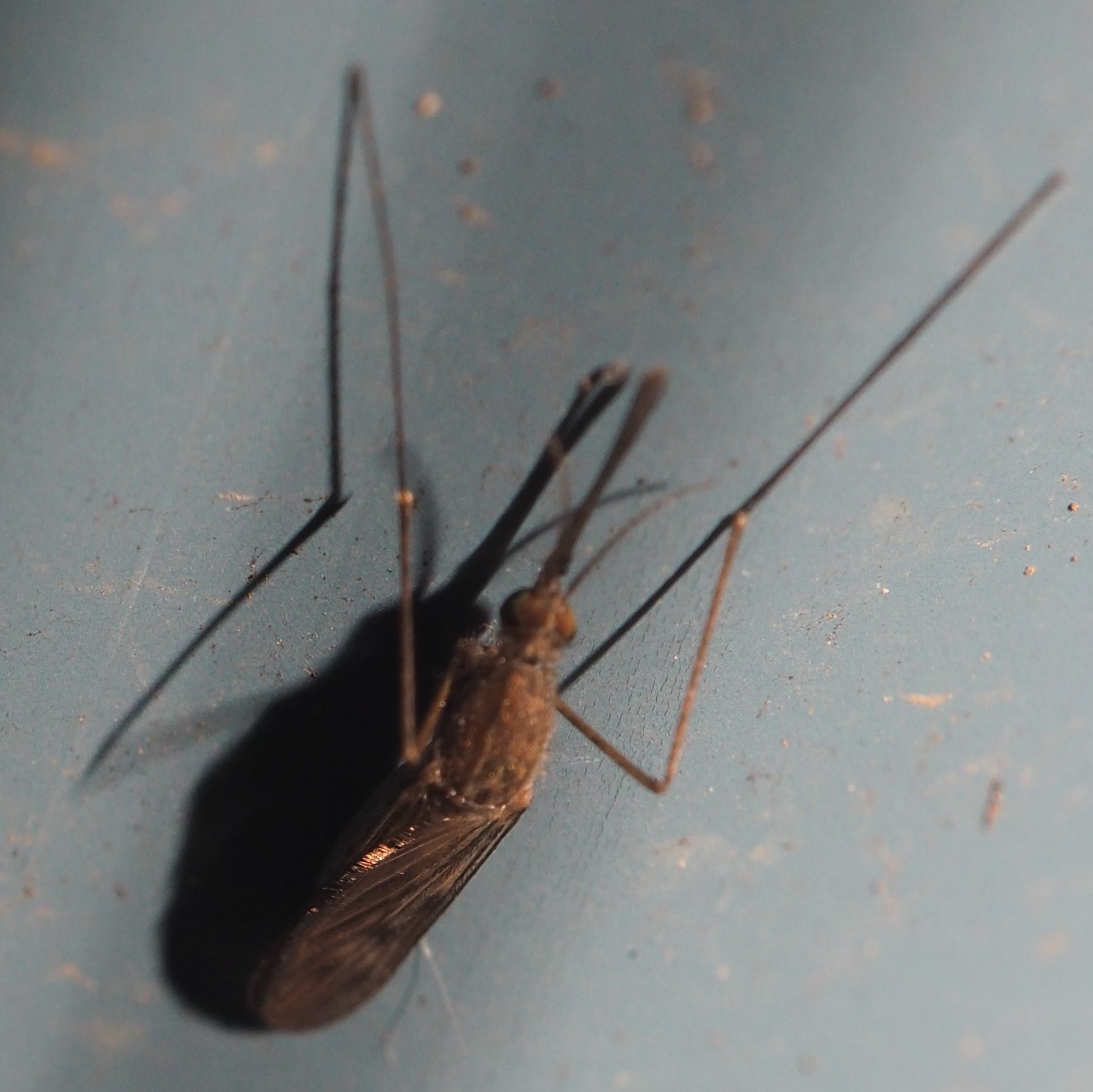
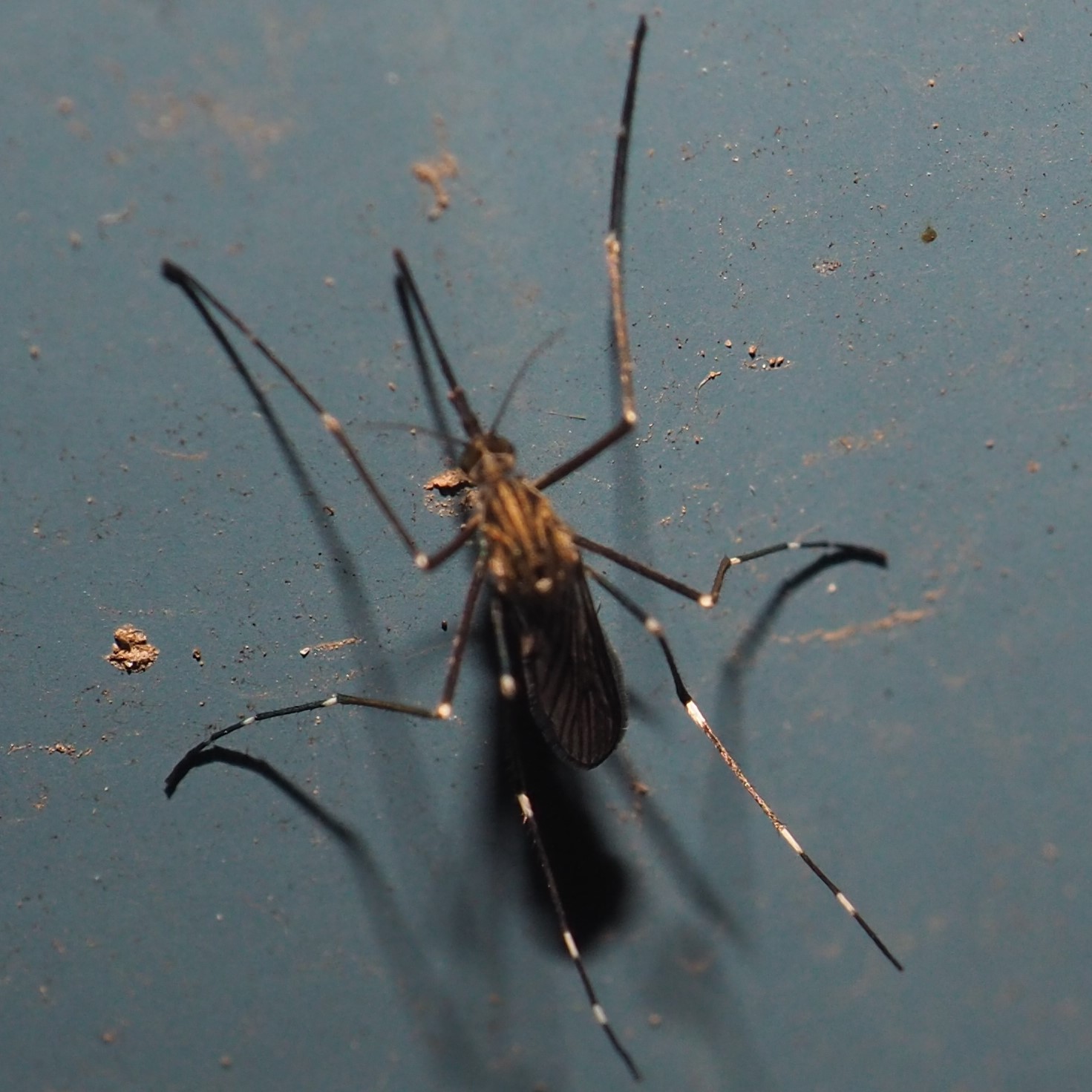
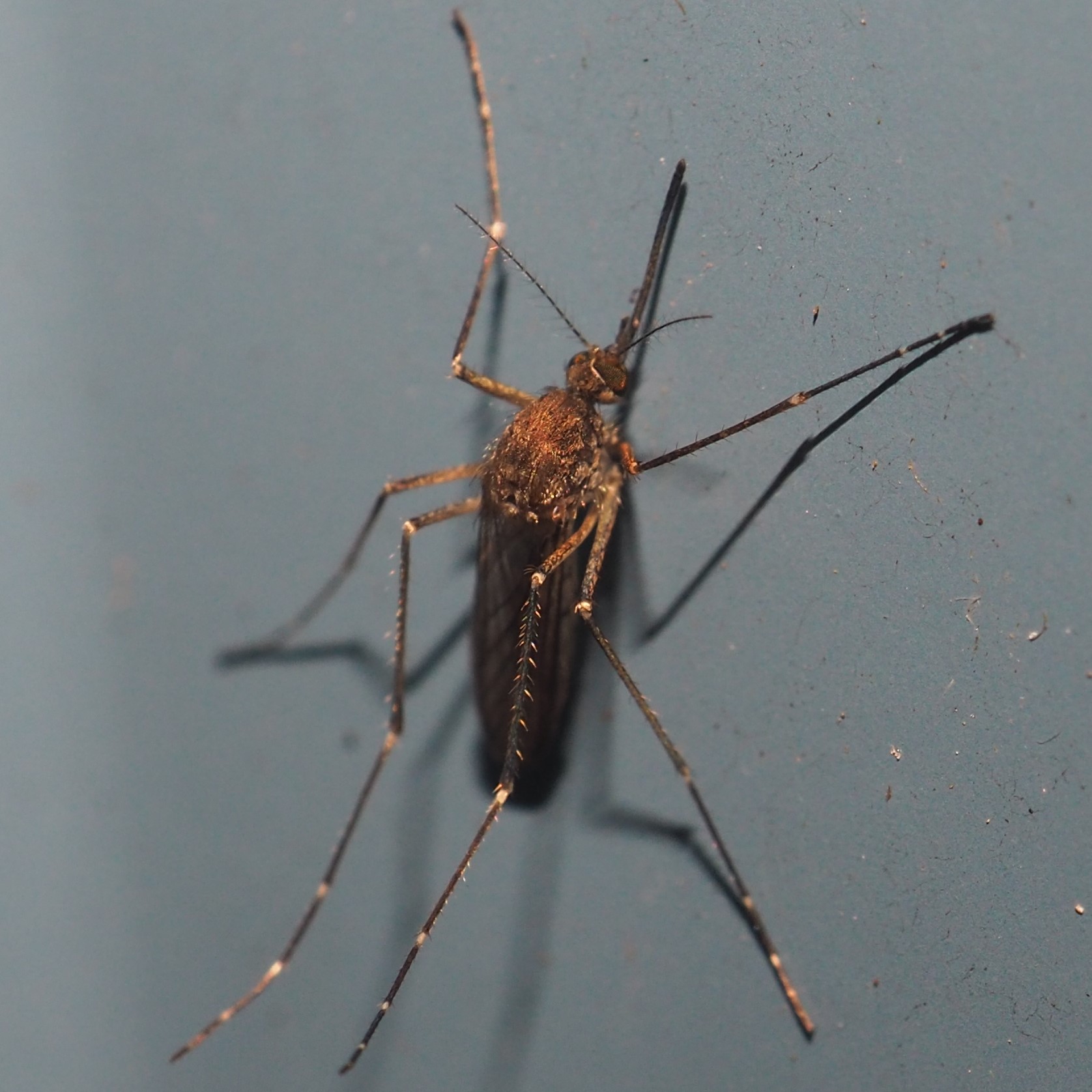
Here are some shiny Flies. I think the first is a Green Bottle Fly. The other two pictures are of the same Fly, which looked bright red in the sun as it lay on the ground.

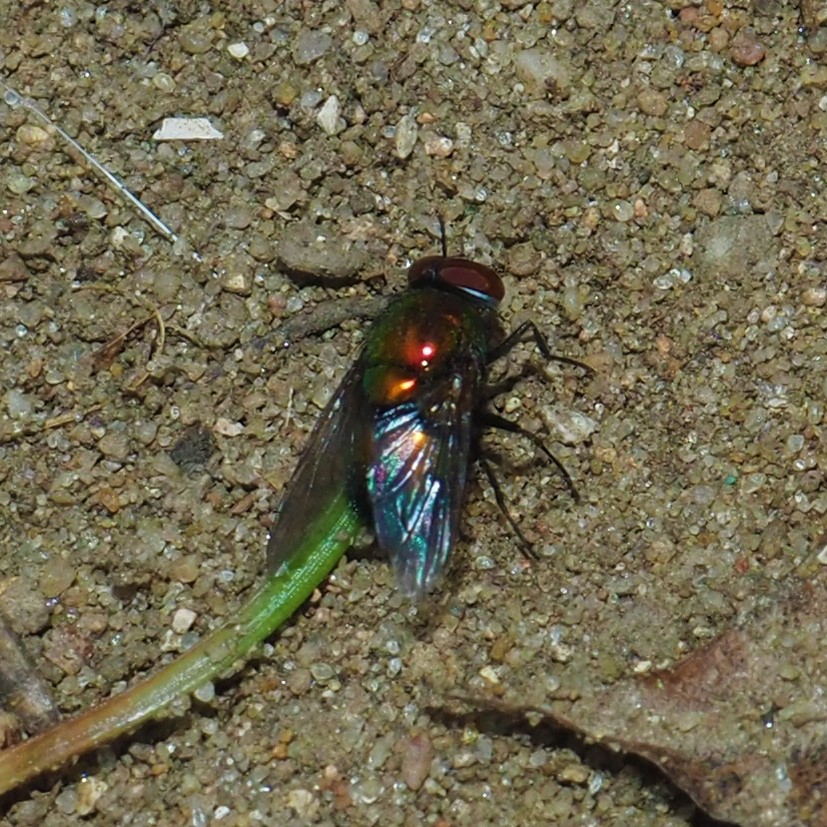
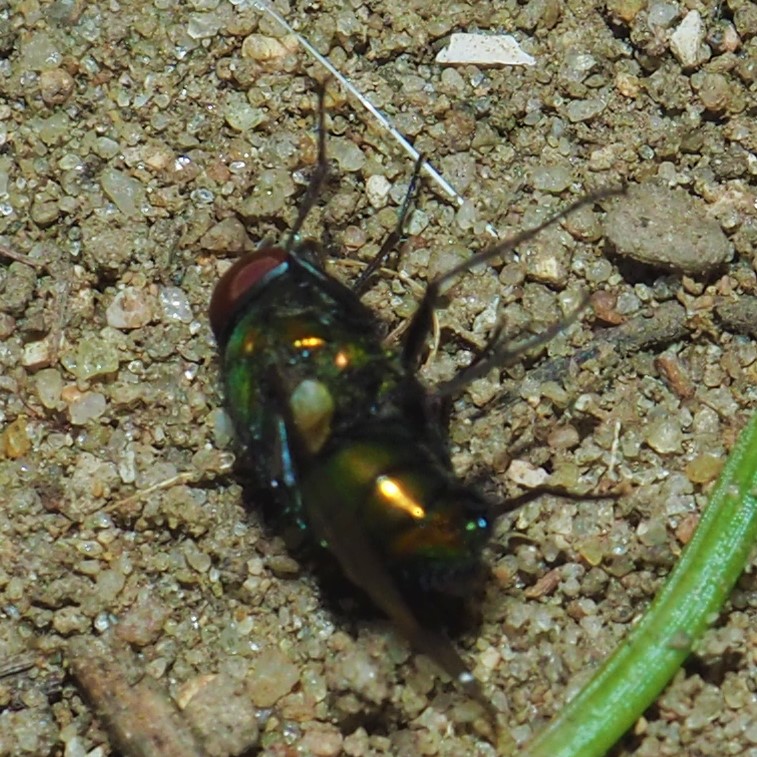
These pictures are probably also the same species of Fly, even though I saw them on three different days.
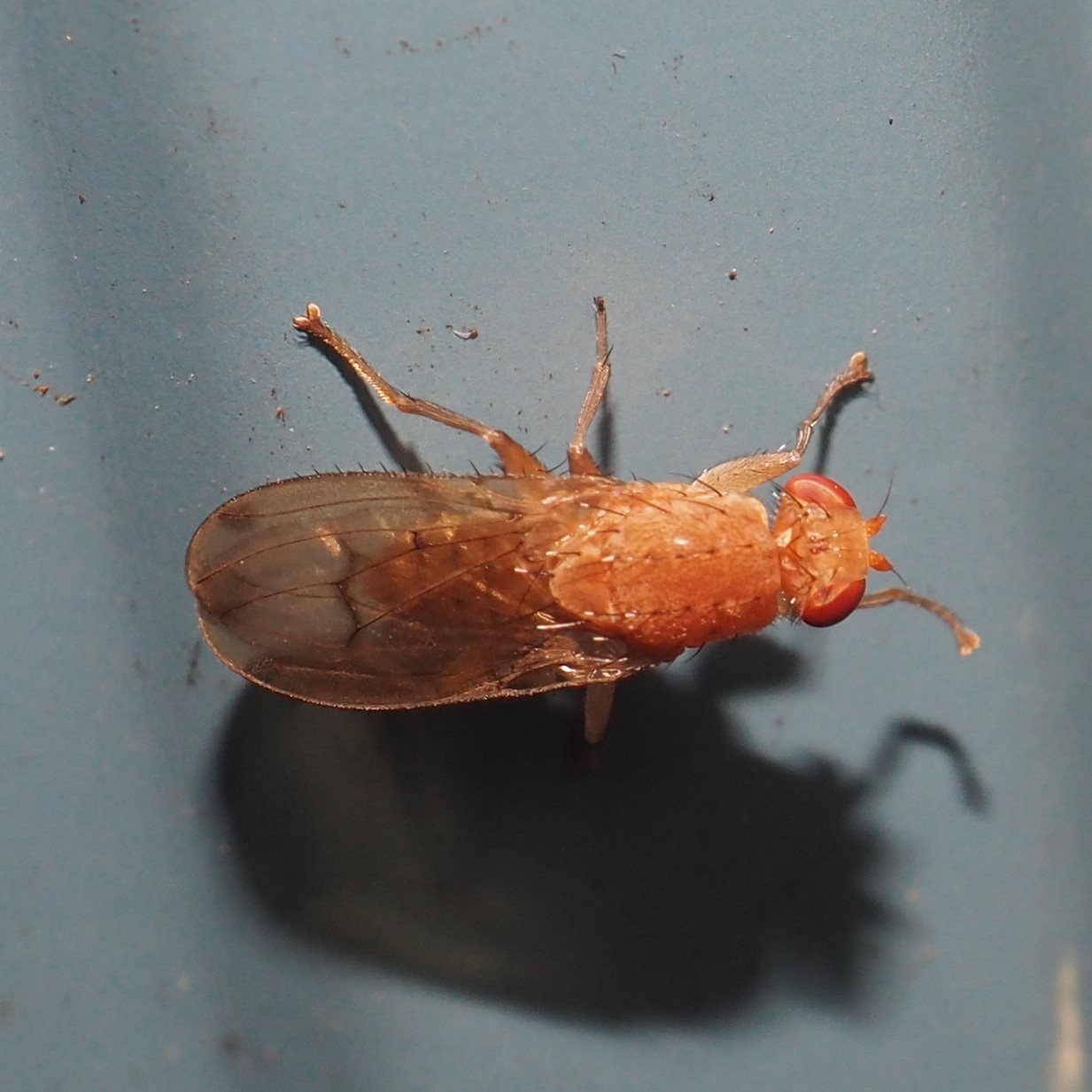
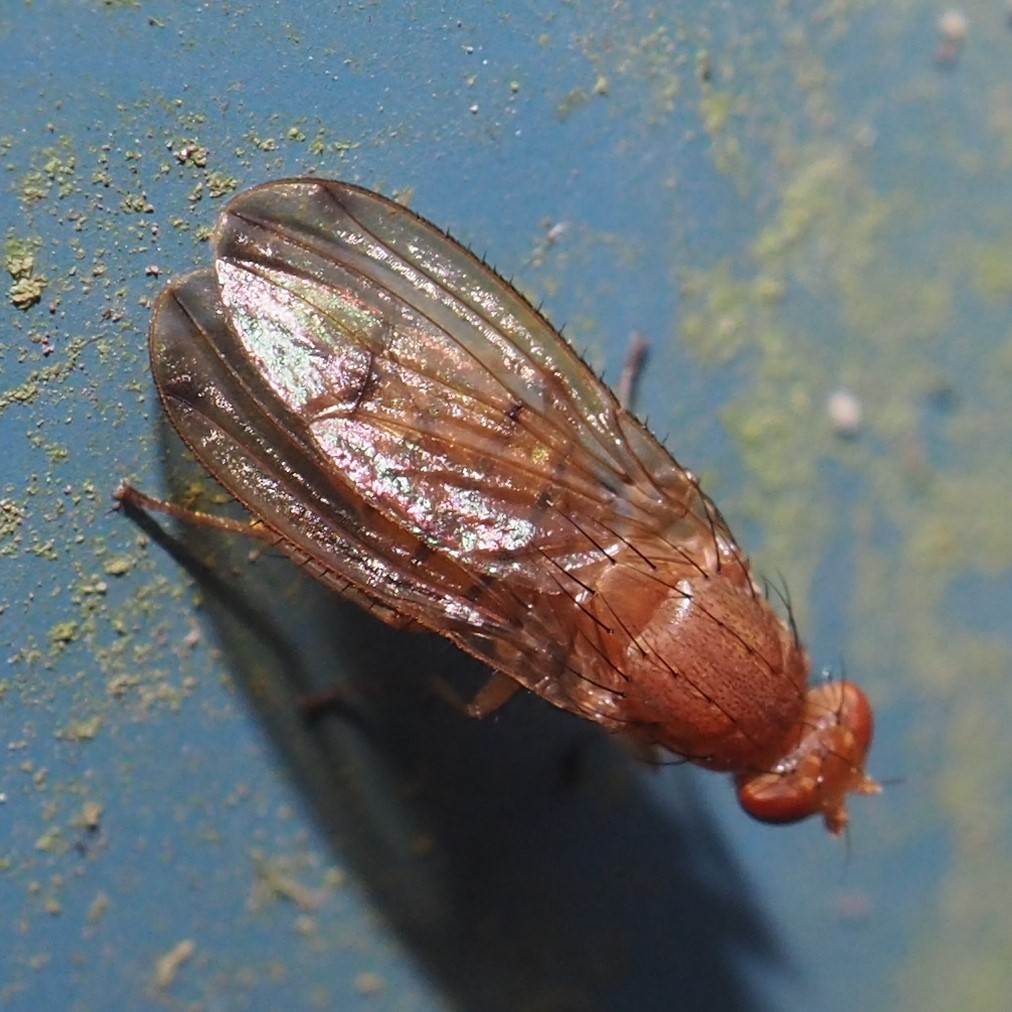
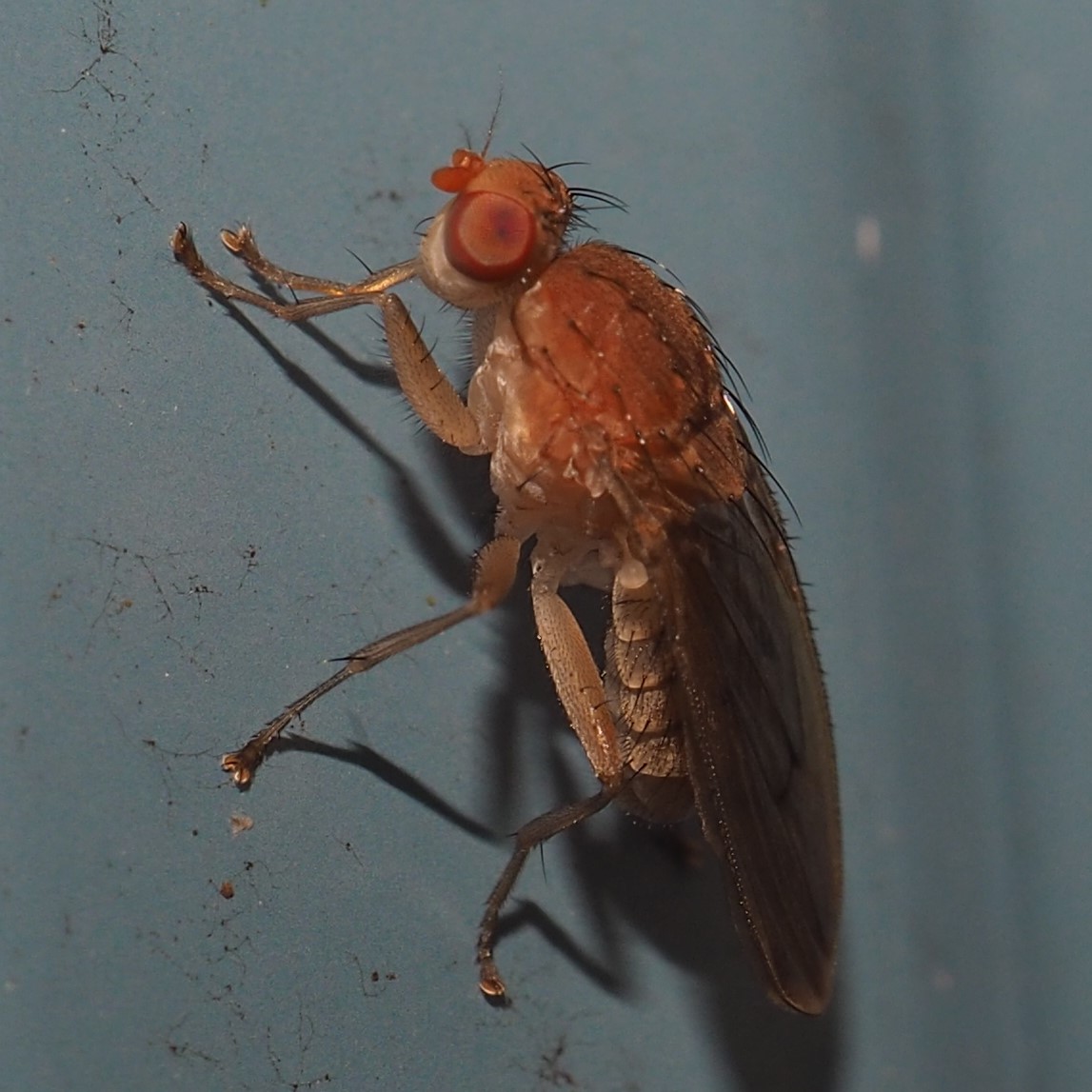
Here are a few more Flies. First is a Lauxaniid Fly. Then a Moth Fly, and finally a very small Fly with enormously long front legs.
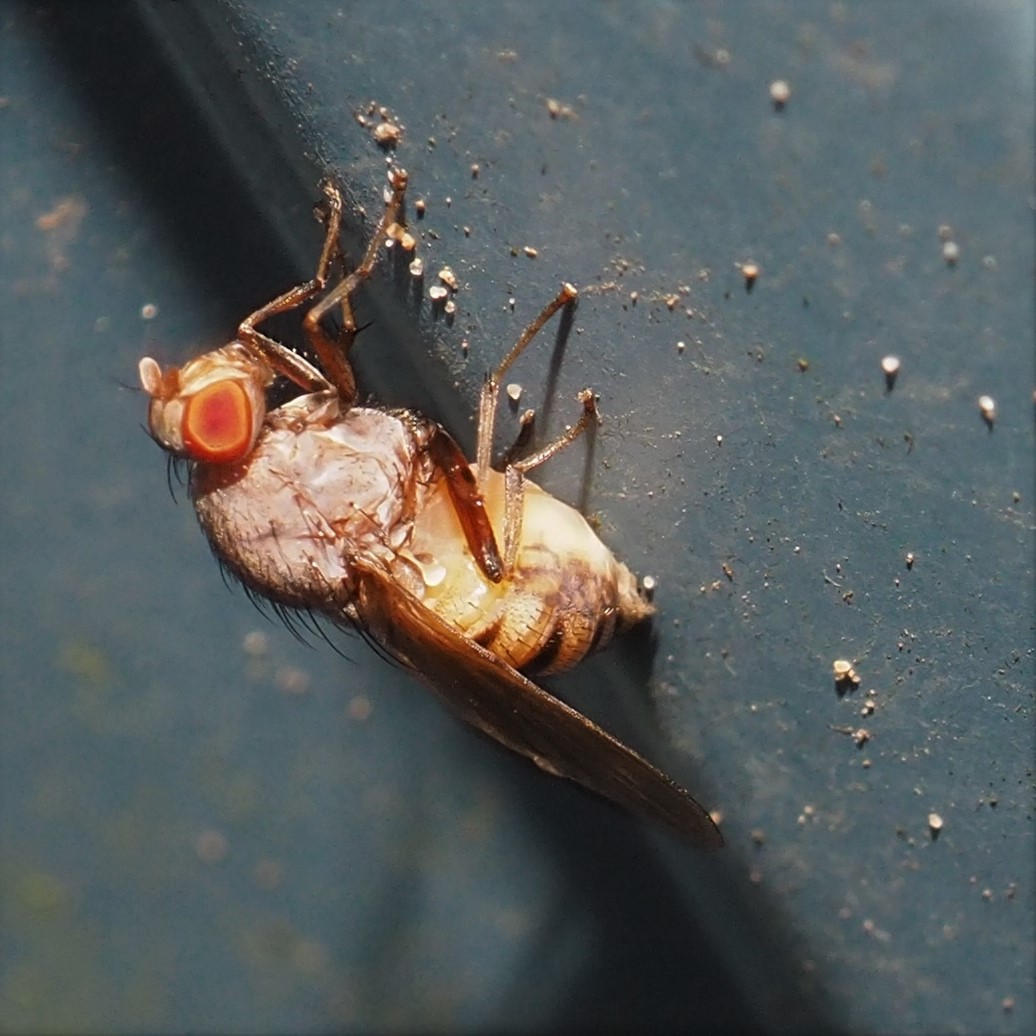
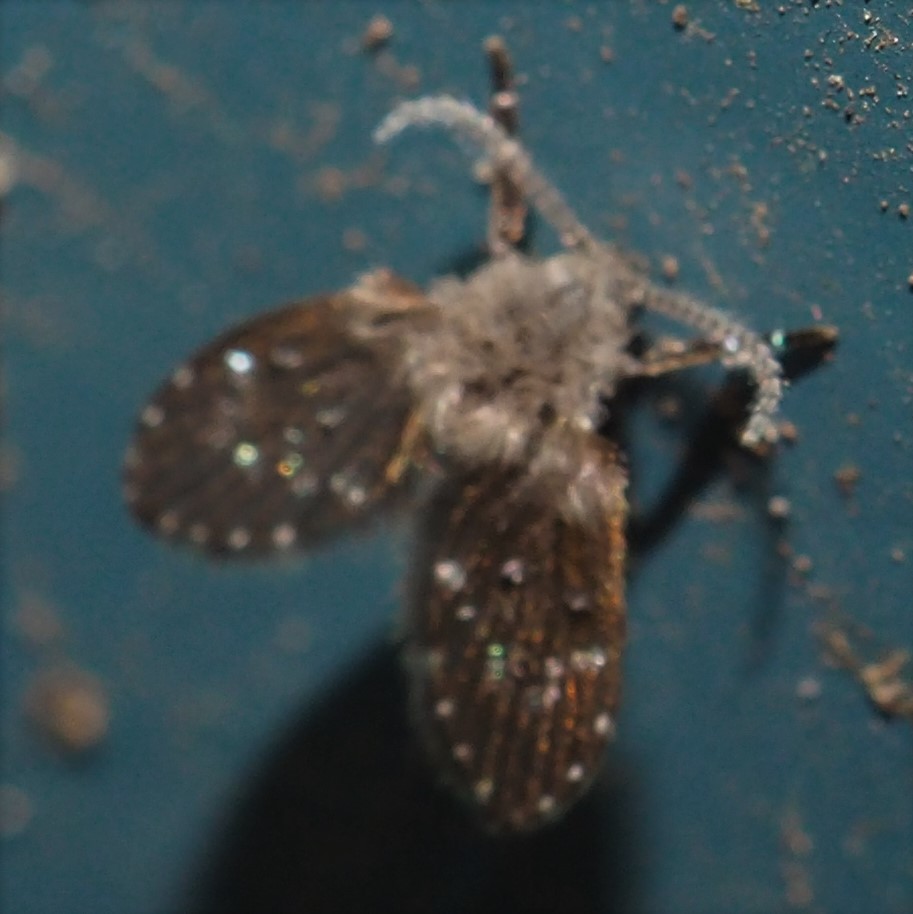
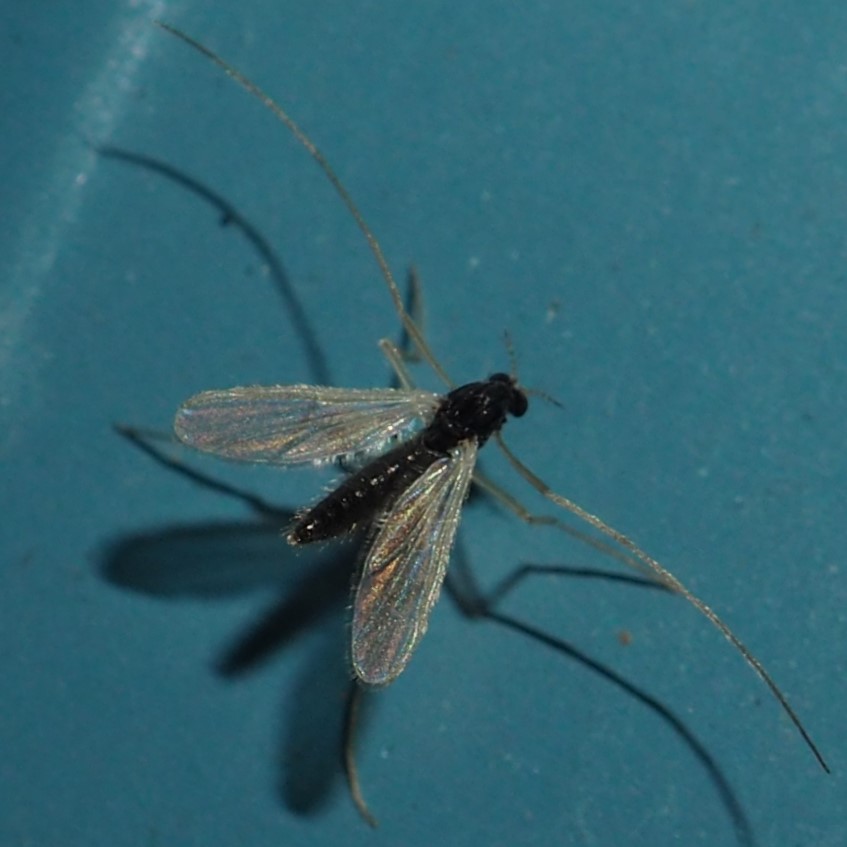
Here are a few Harvestmen - they are probably all Eastern Harvestmen. The third one seem to be a juvenile. Last is a little mystery - it was extremely small and was in a frame with the Barklice.
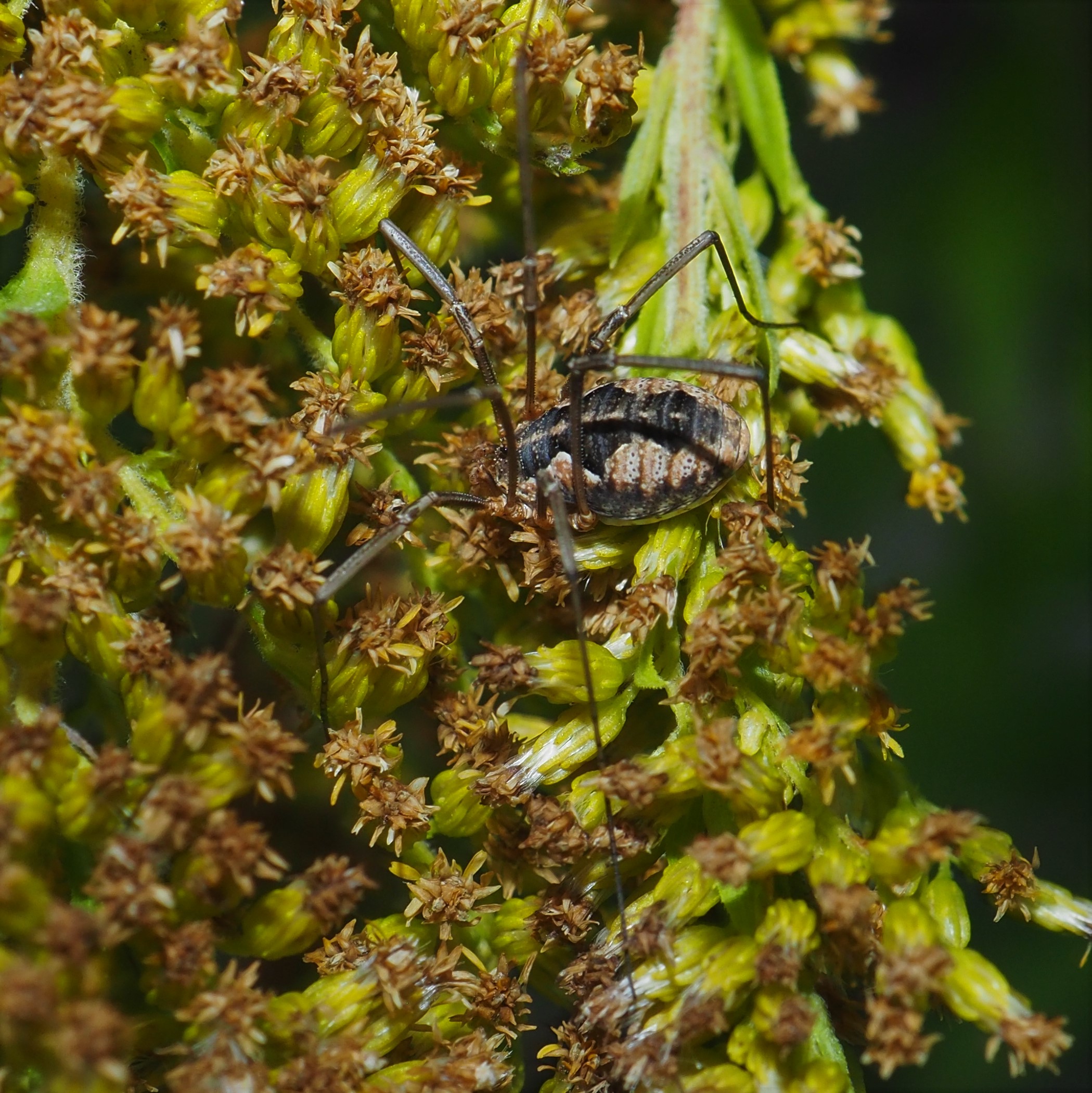
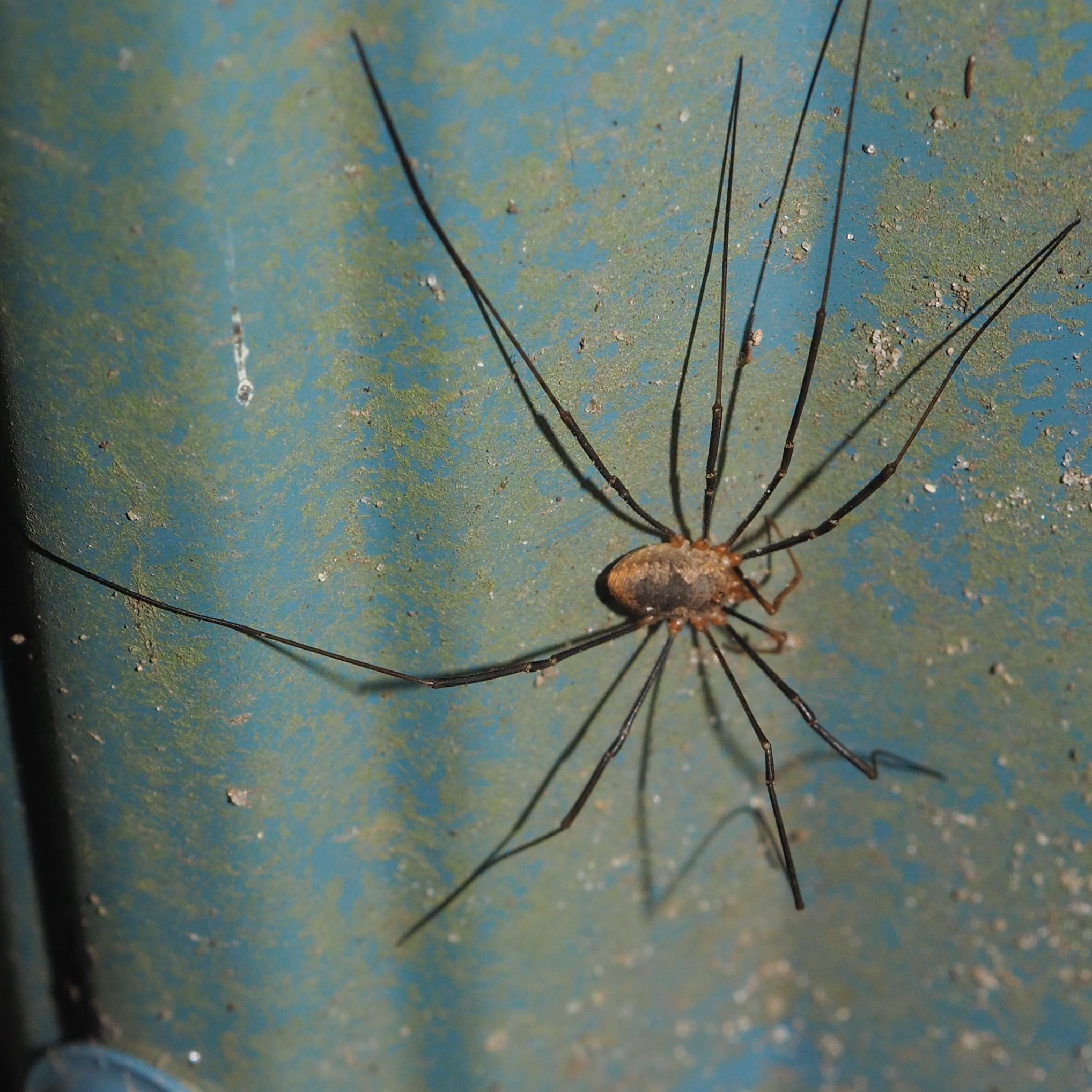
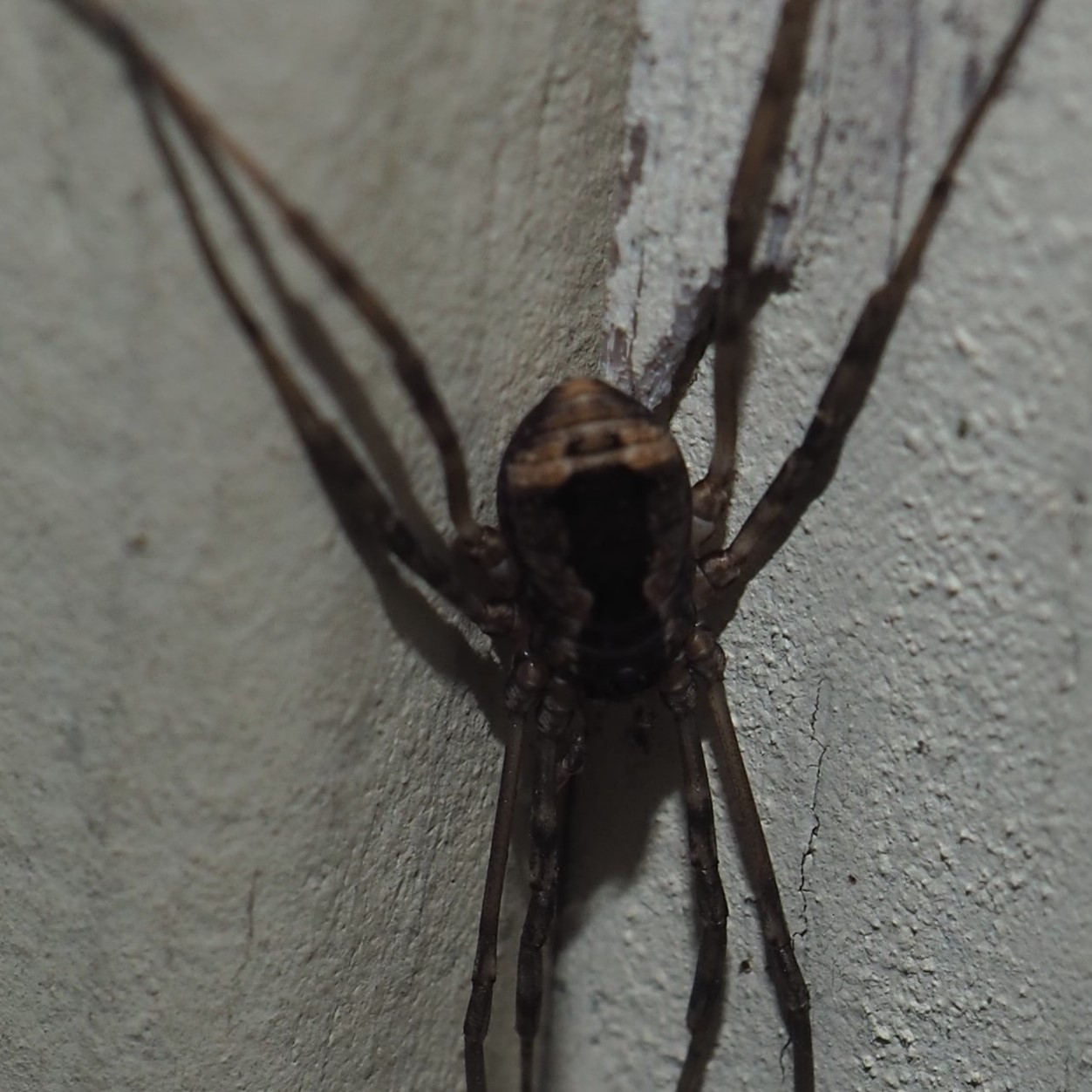
I think it's time to go for a walk through the flowers that remain out there. My beloved goldenrod is almost all brown now. Here's what is almost certain to be the last of the Japanese Anemone. At the other end of the alphabet, there are still a few Zinnias blooming.
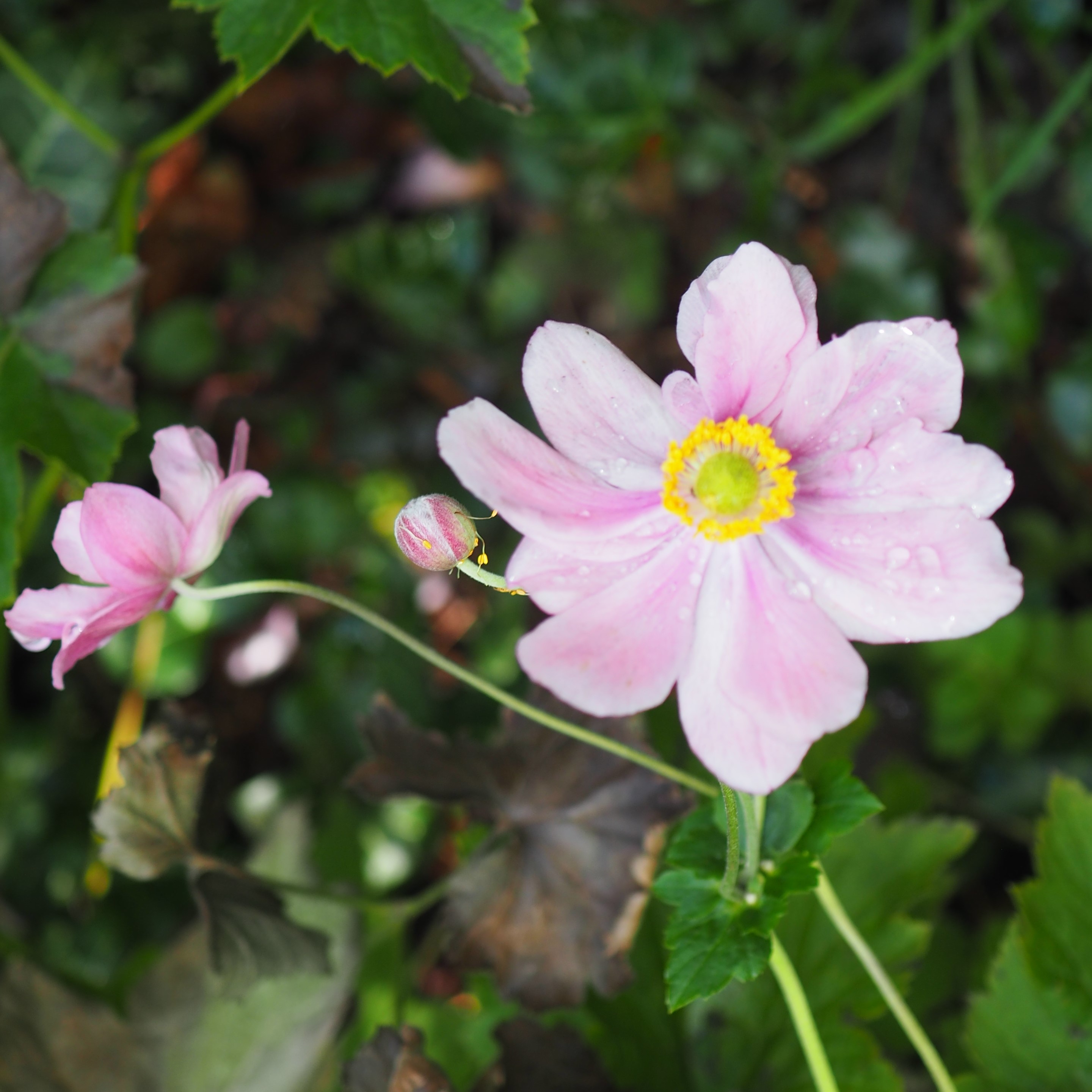

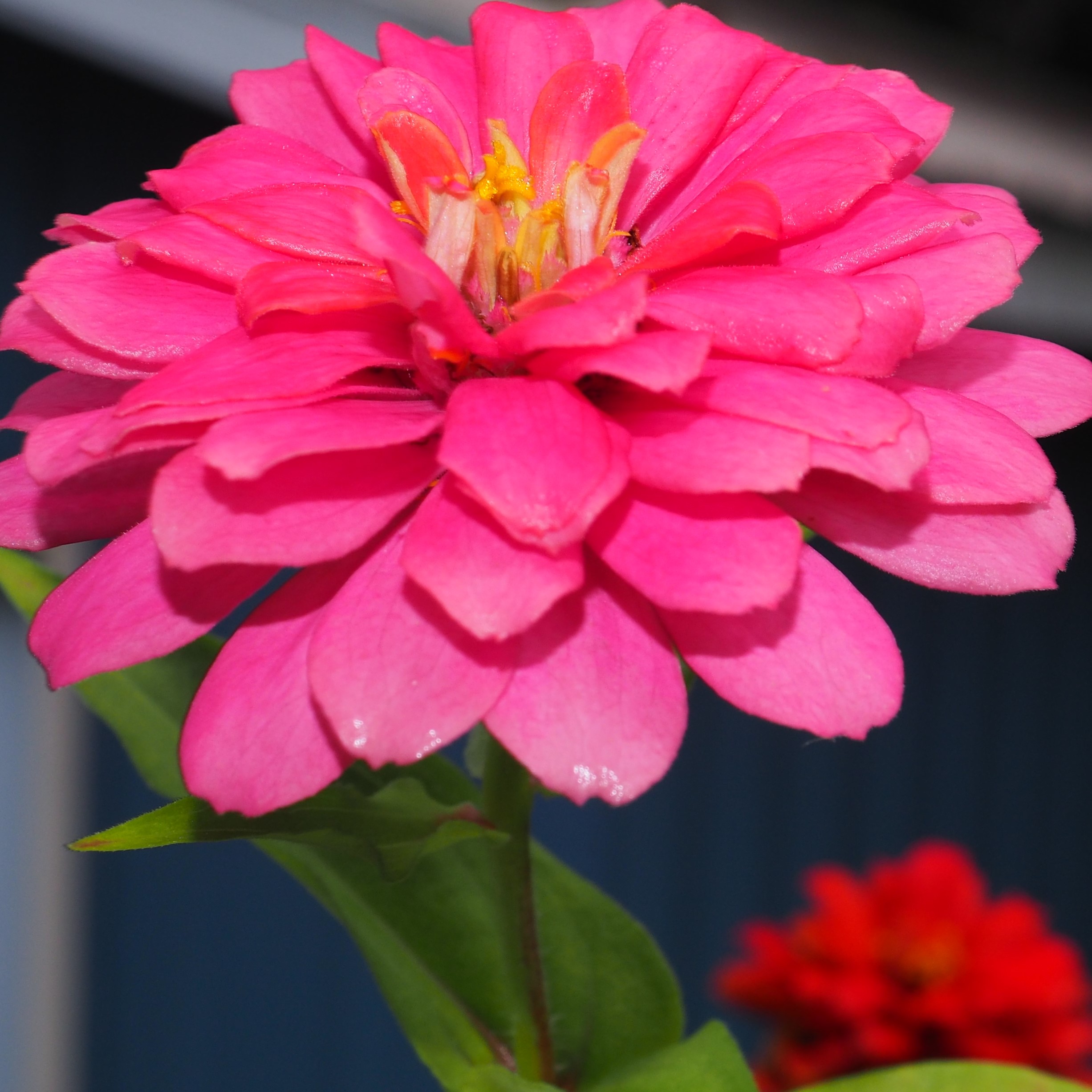
The asters are still going but slowing down. Too bad we haven't had a lot of sun lately. But let's enjoy the variety of colors while we can. Note the dearth of bees now.
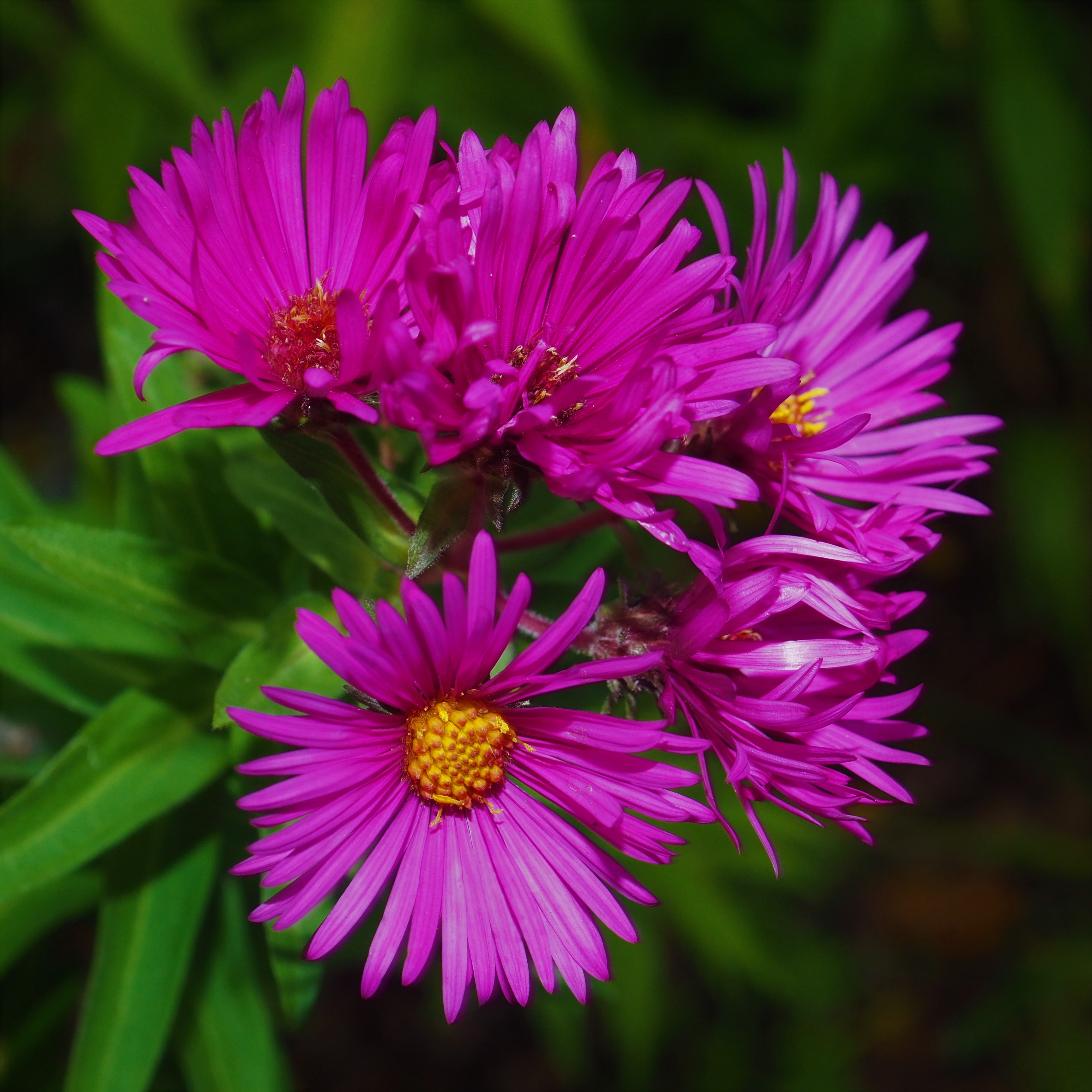
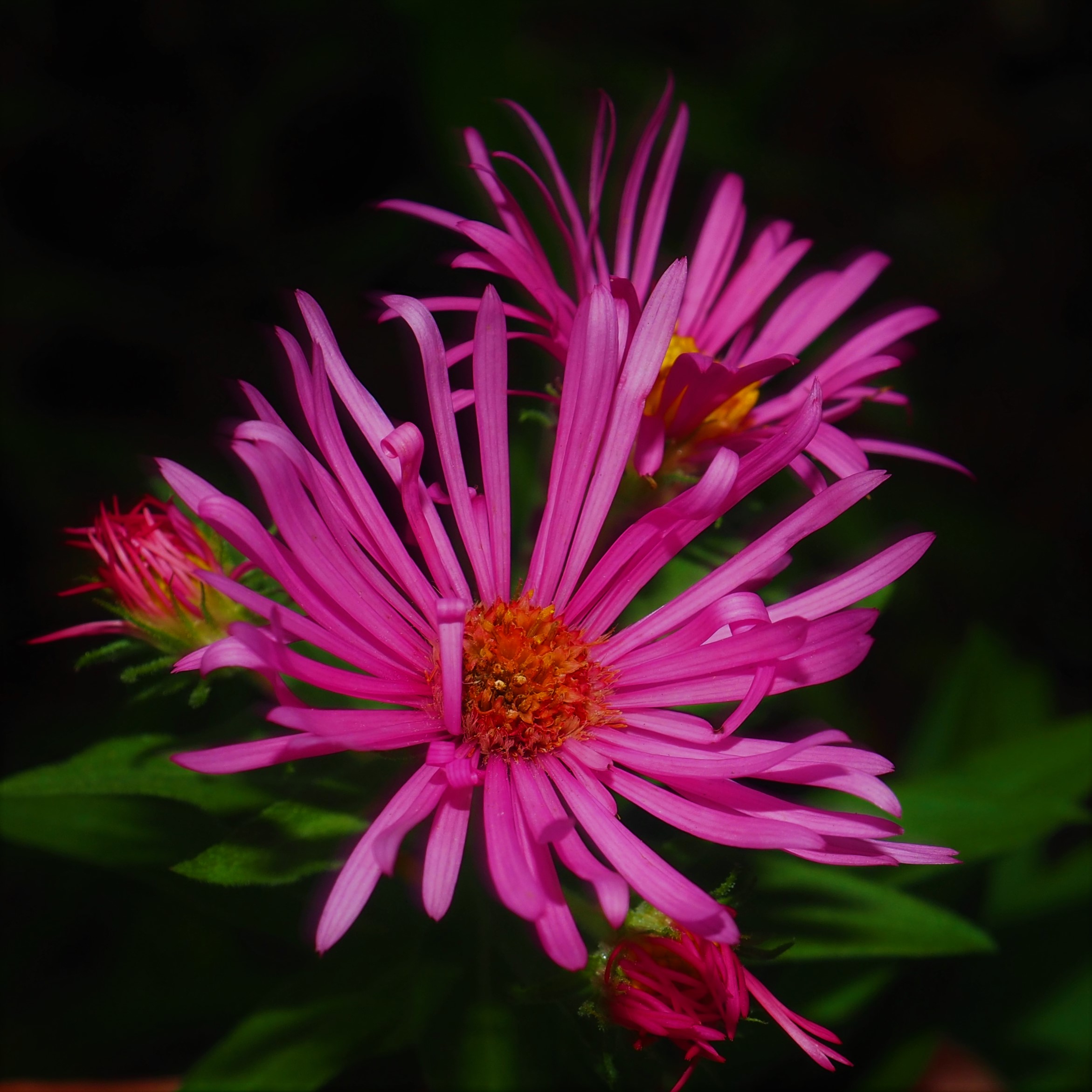
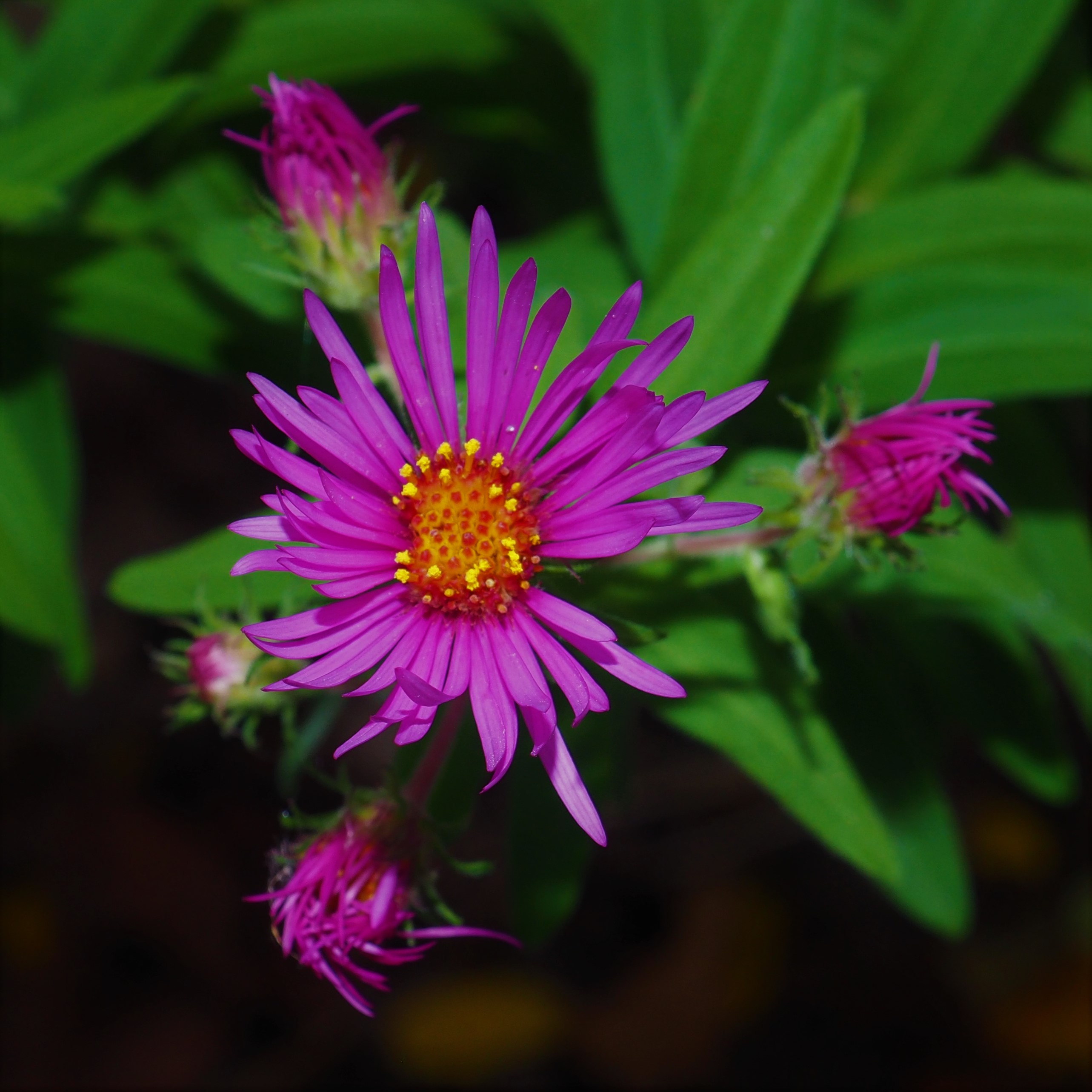
Pinks and Purples.
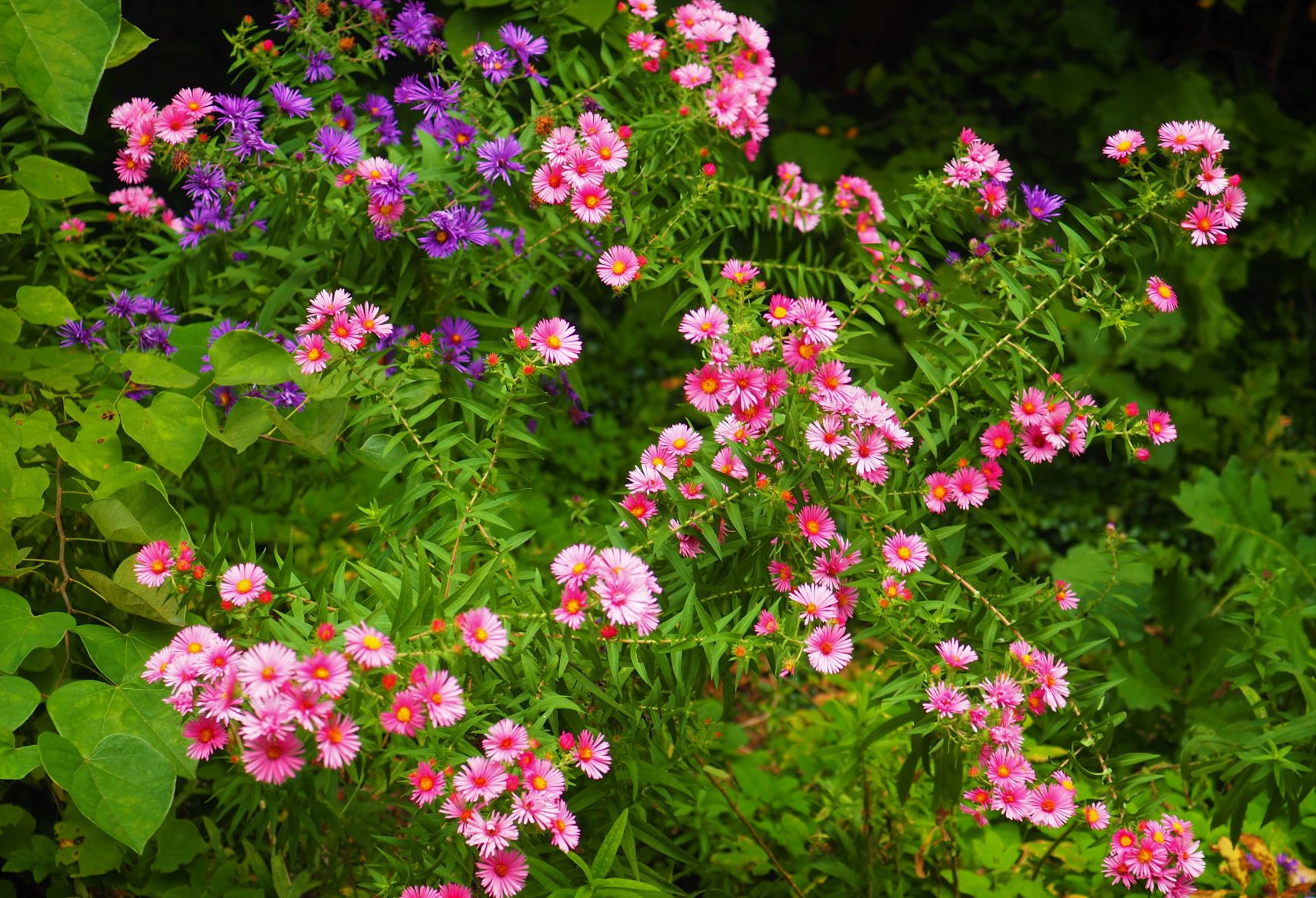

Here are a few Colchicums. Remember, they are sort of like Fall Crocus. They send up only leaves in the spring, and in the fall, only flowers.

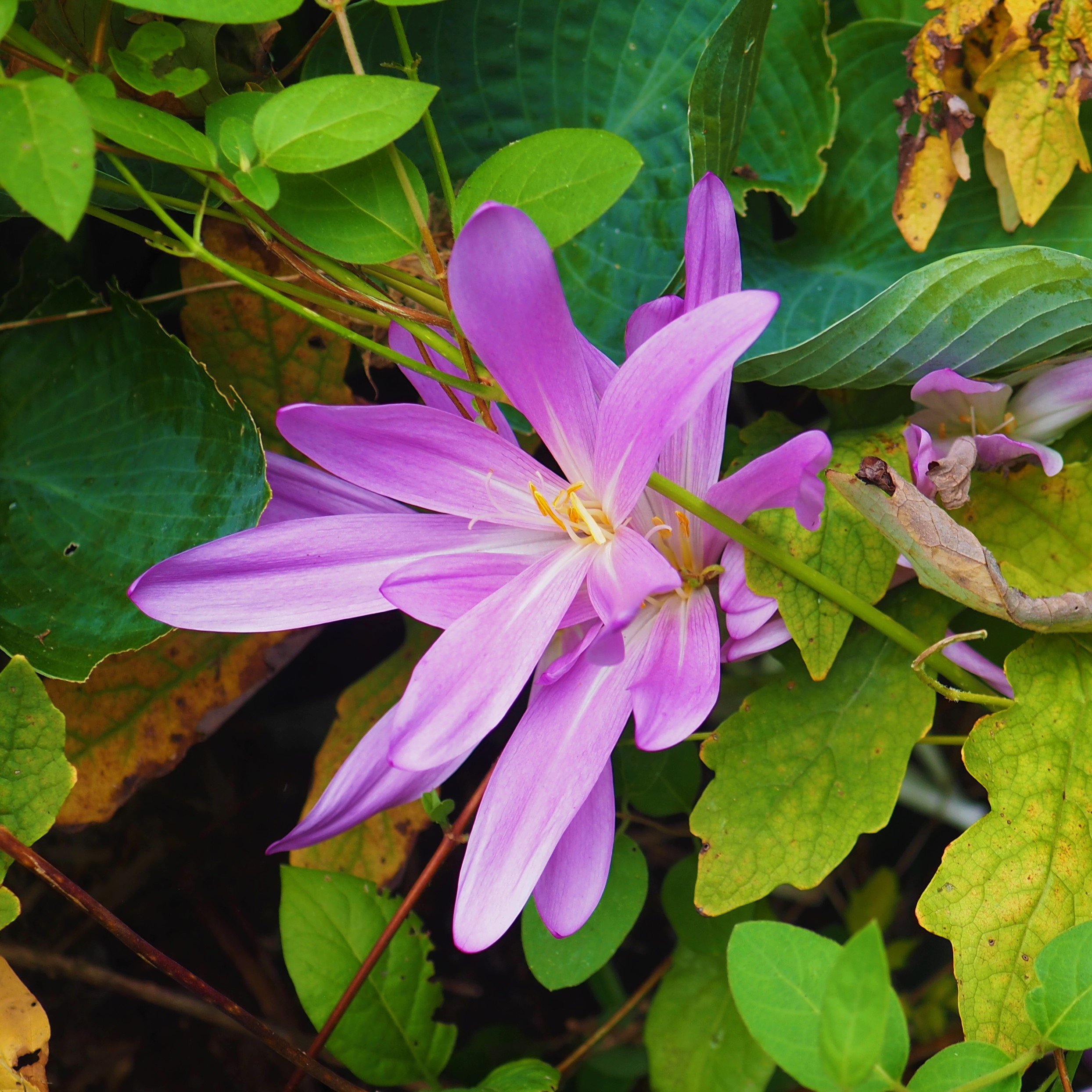

The Fleabane rebloomed, but the Virginia Creeper and the Snowberry leaves are turning red.
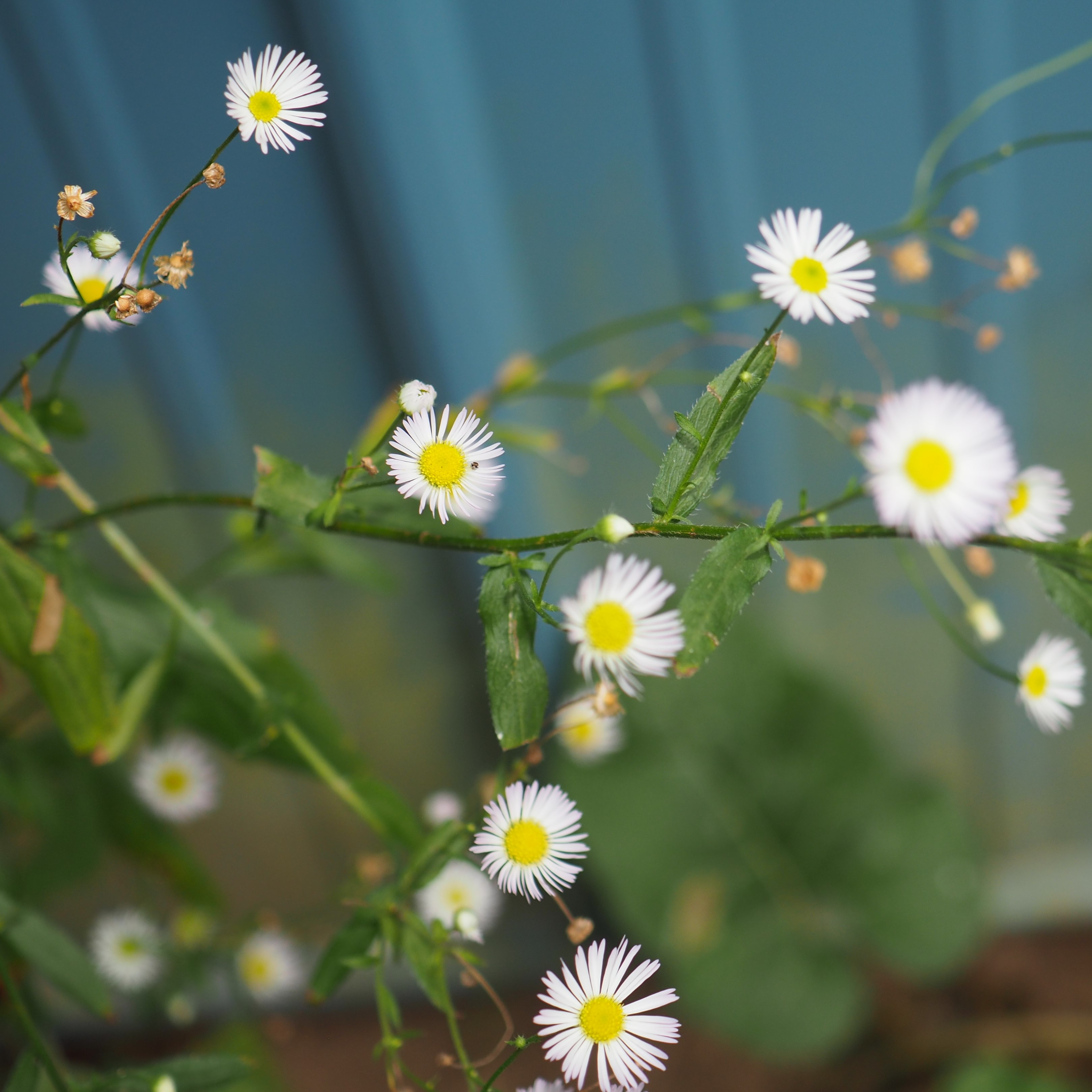
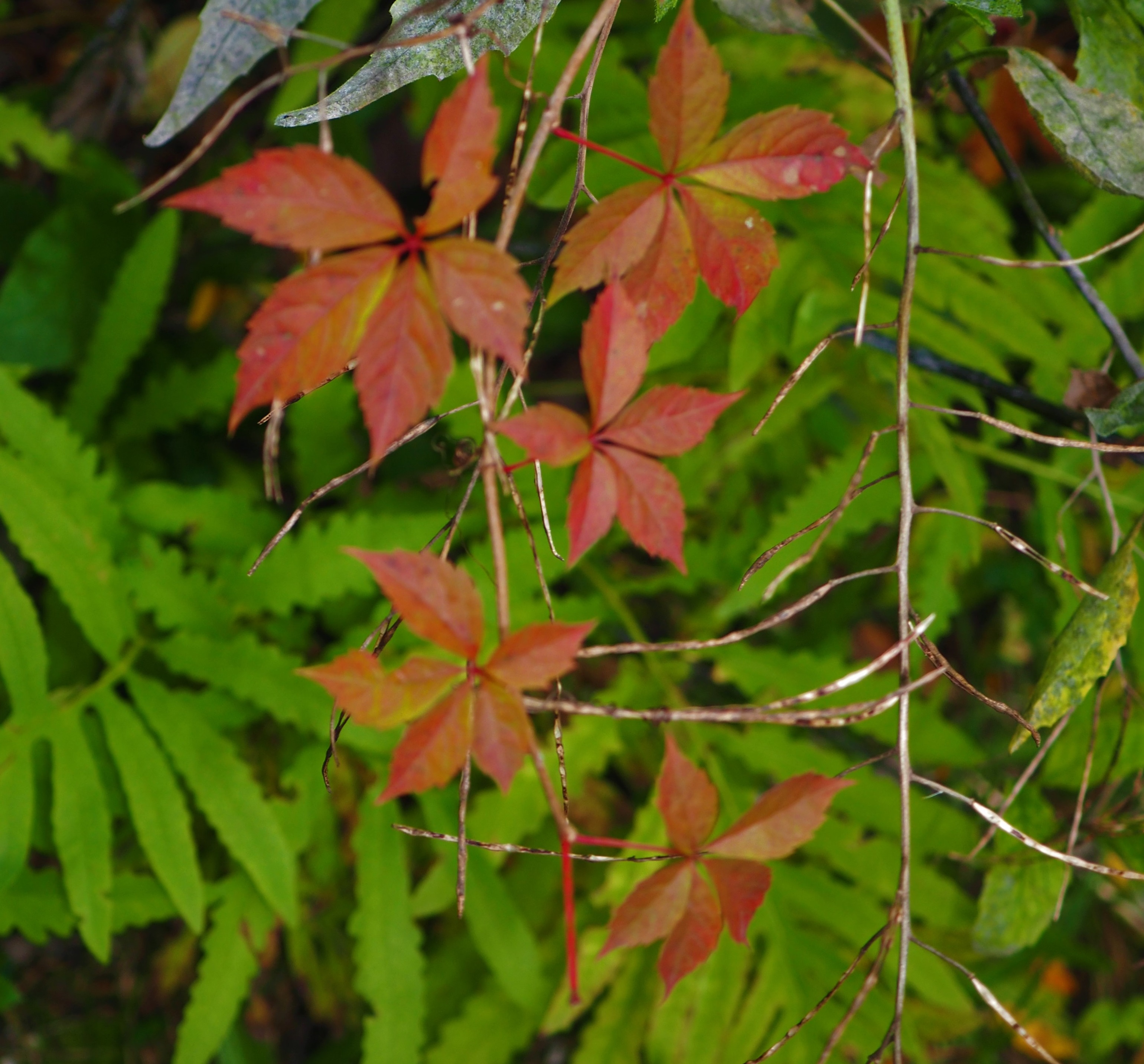

How about the Spiders now? Here are a couple of Commmon House Spiders. Apparently they come in Browns and Blacks. (The males eventually turn red. These are probably females.) Third is a Cobweb Spider clinging to a chunk of lichen.
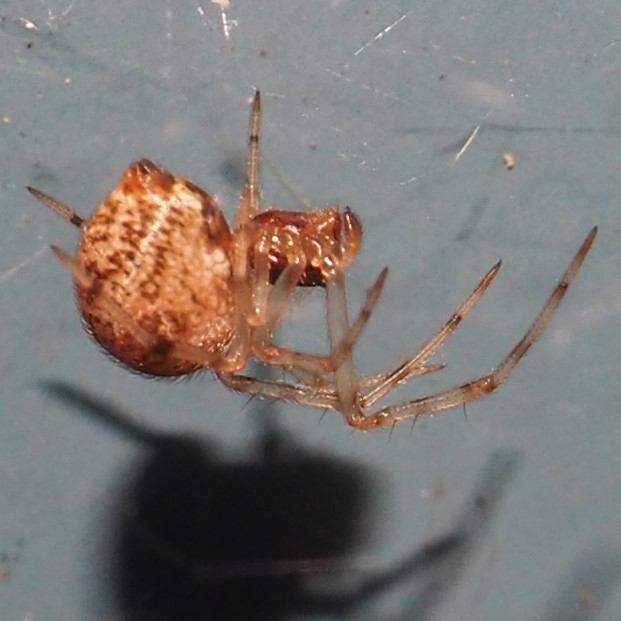

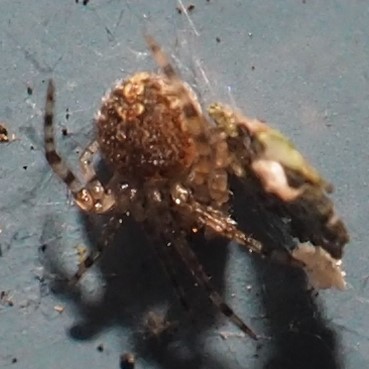
This one is probably a Ghost Spider, maybe a Garden Ghost. They seem very graceful.
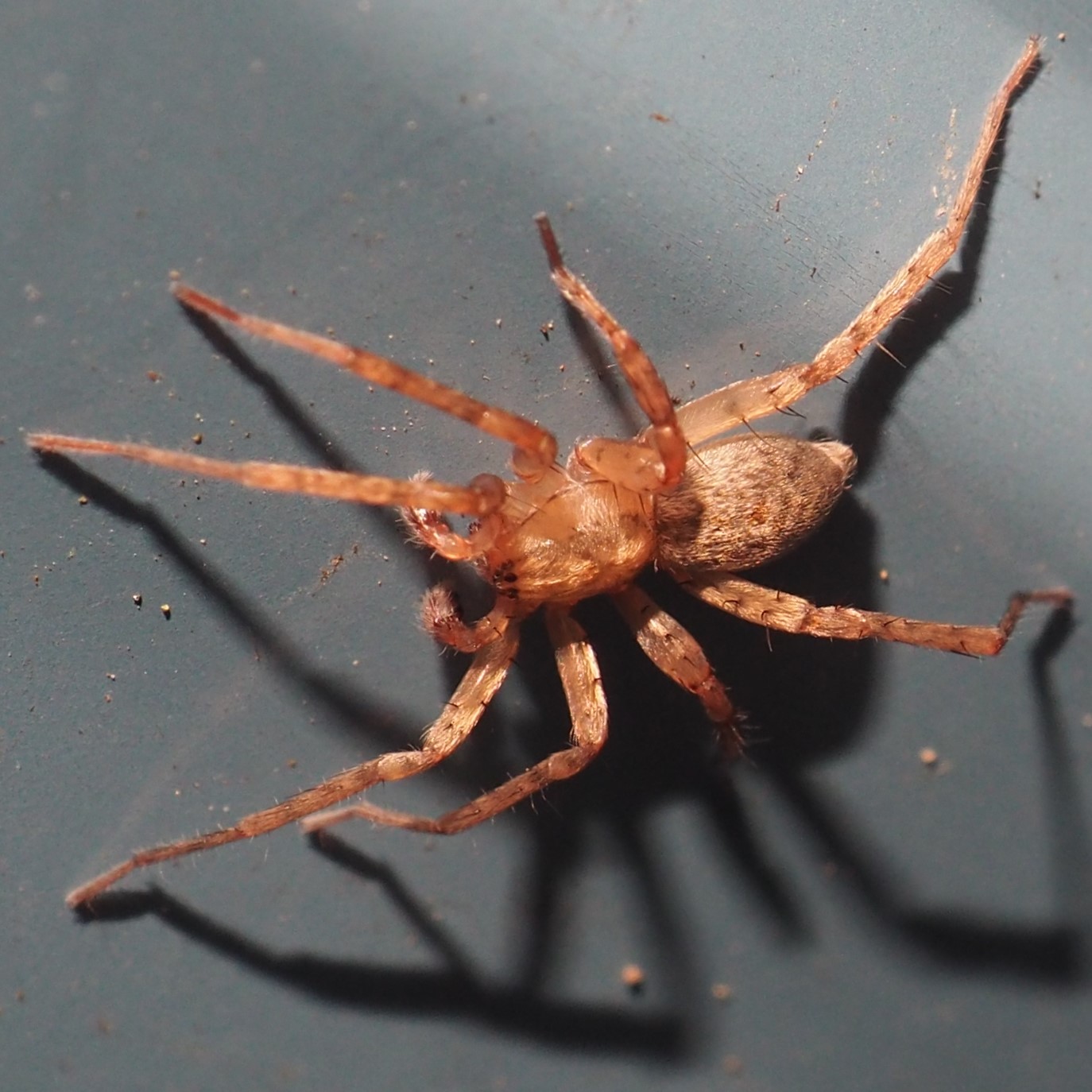
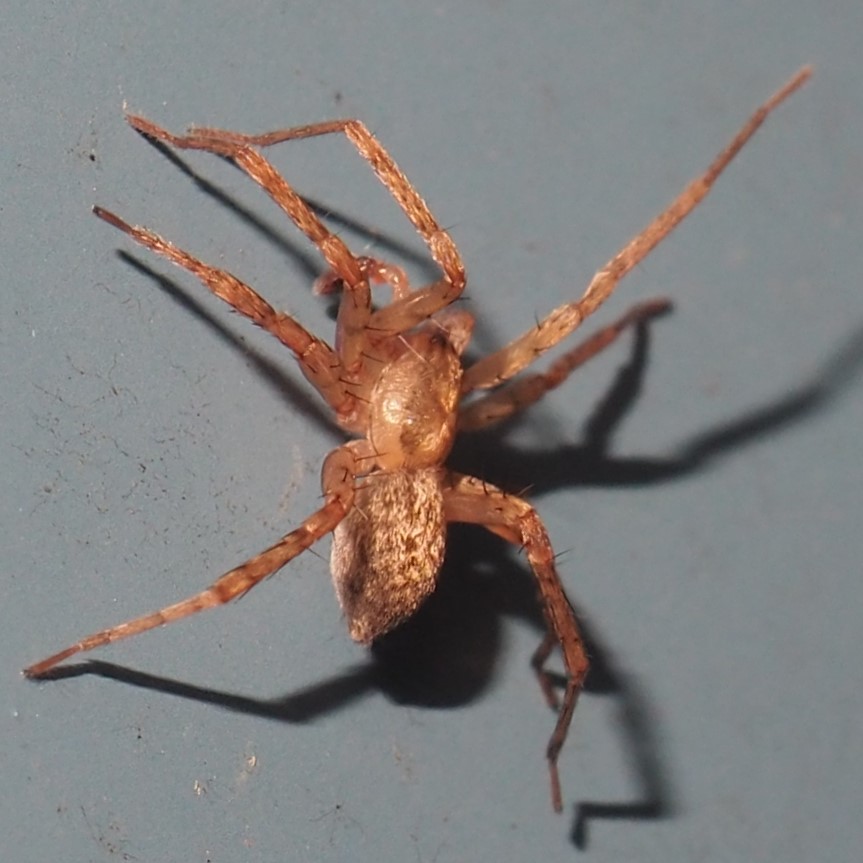
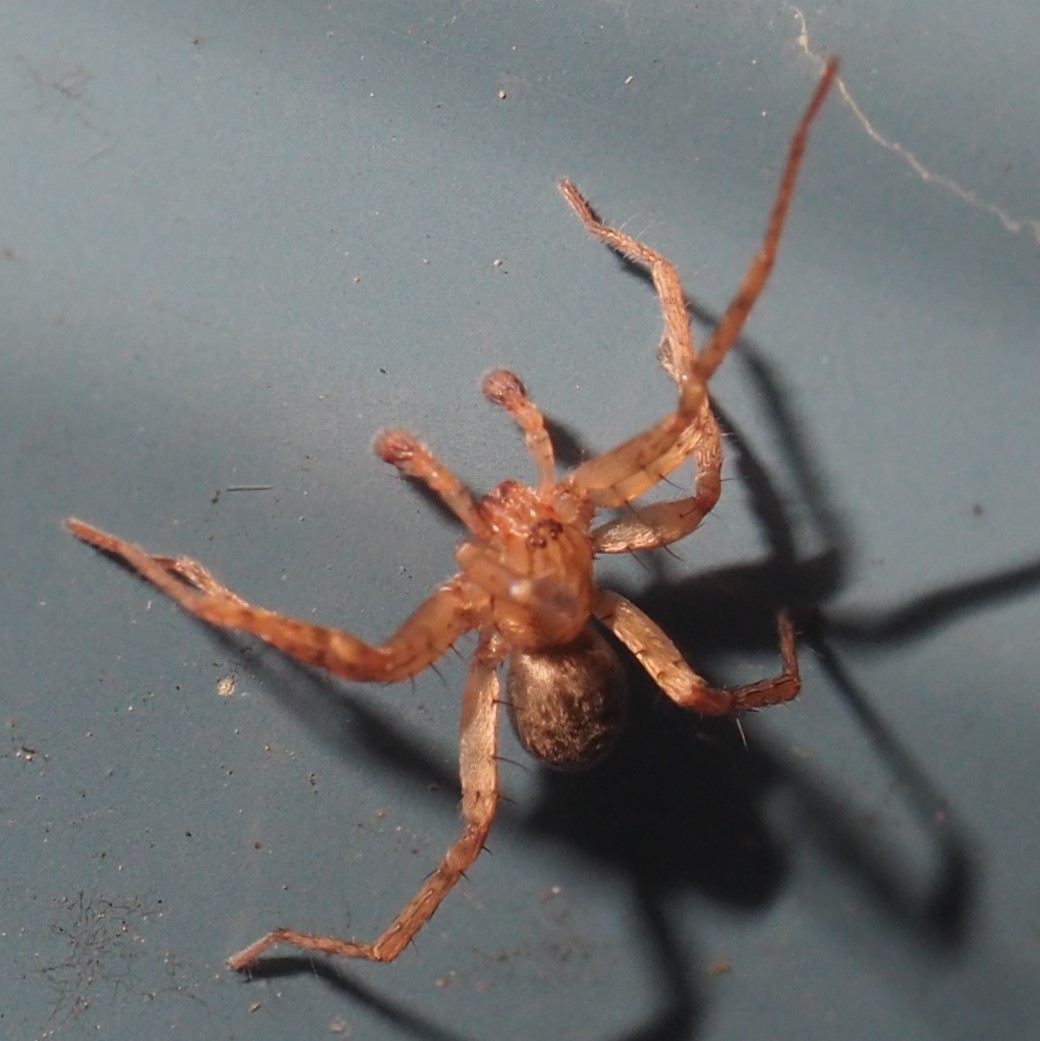
Here are a Grass Spider, which I've never seen in the grass; an interesting one - it almost seems to have a face on its abdomen and seems to be in a Karate pose; and a little Crab Spider, who has caught a bee in the Goldenrod.
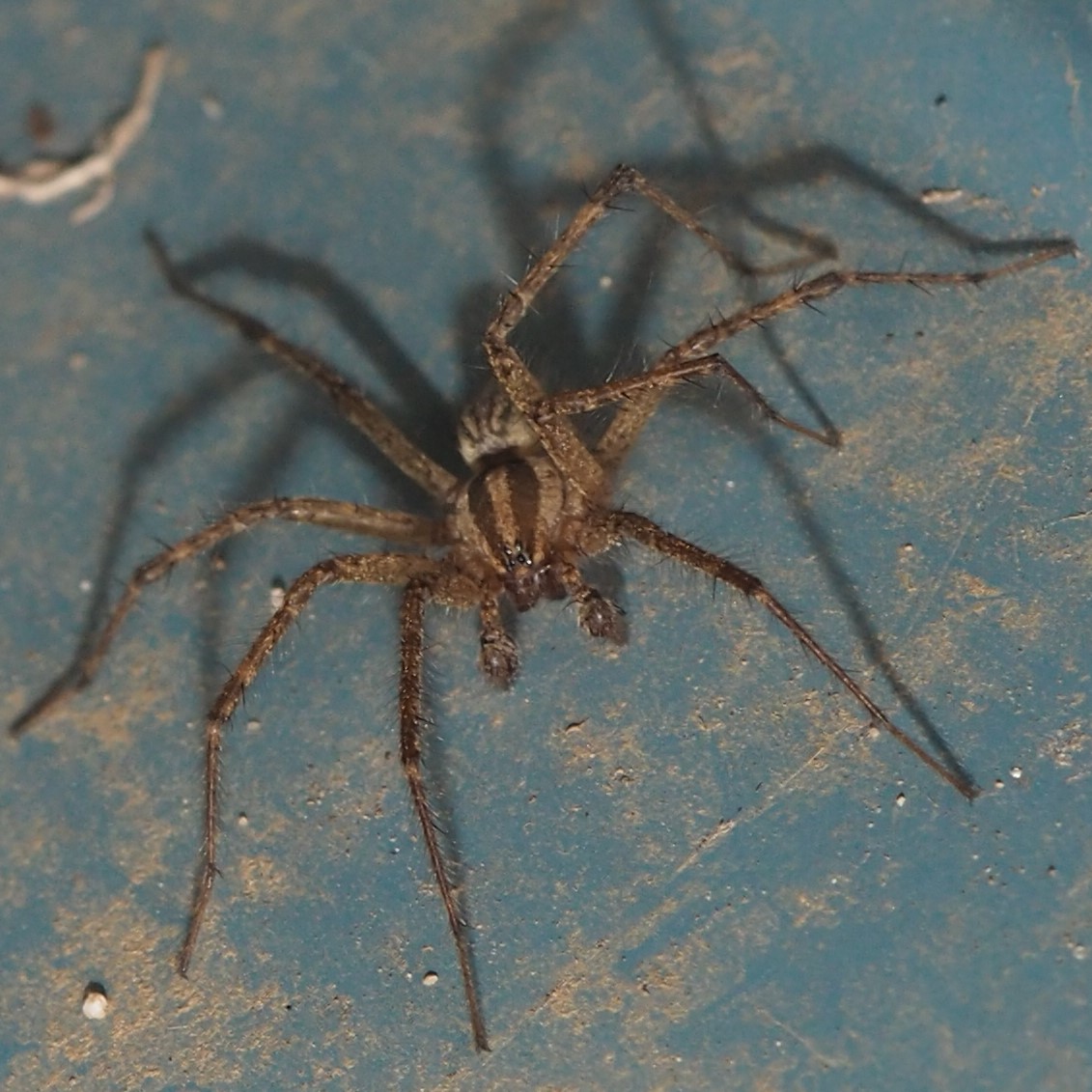
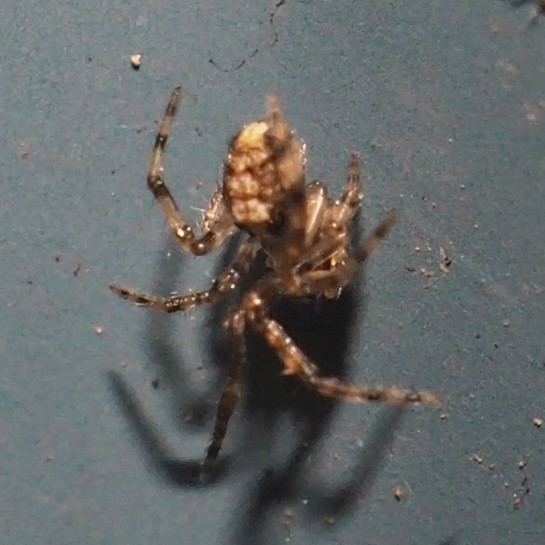
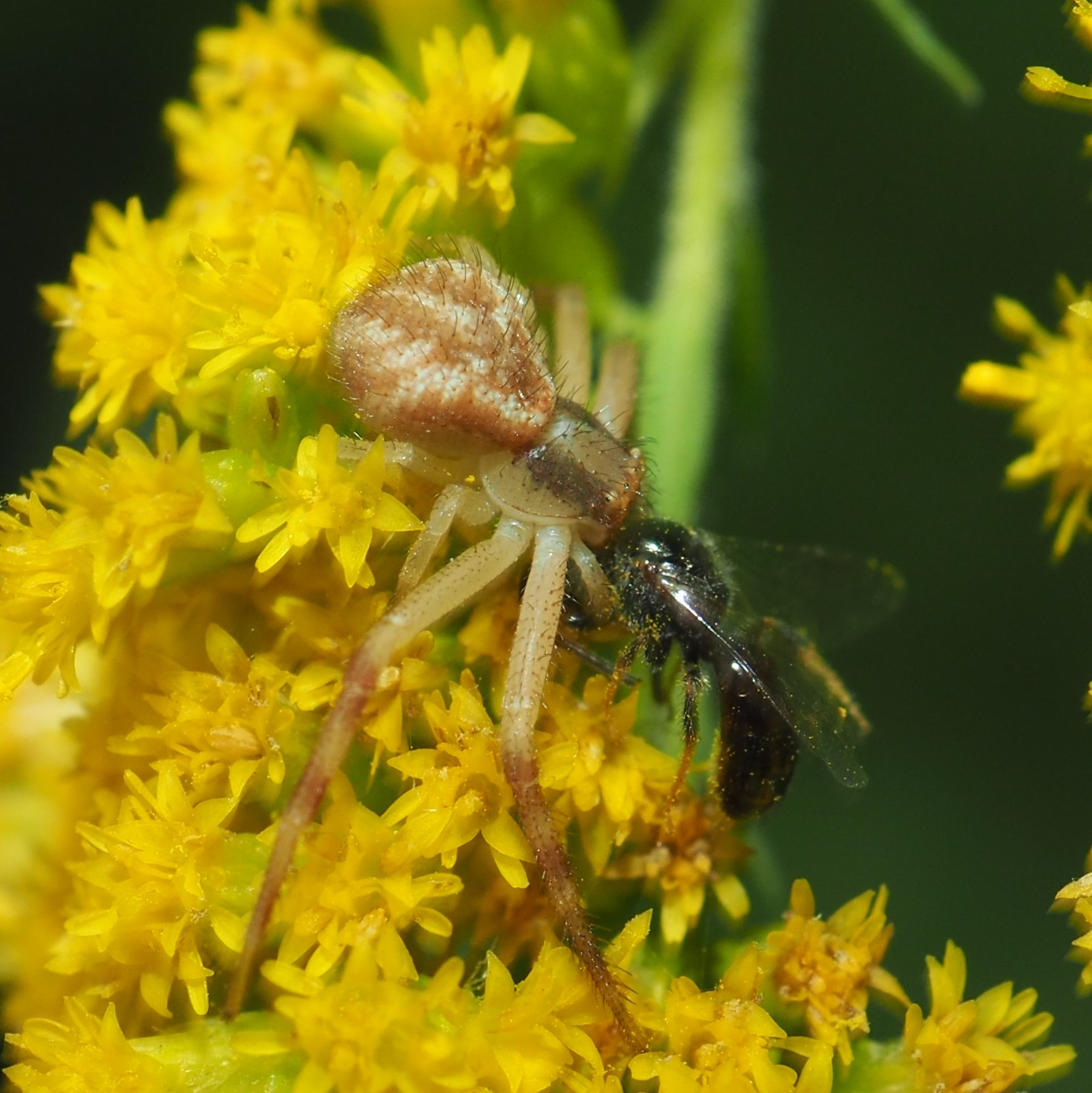
The other day, these strands appeared in the pond. They remind me of the egg strands the American Toads produce. I wonder if they were made by that Salamander that climbed into the pond in the last week or two. It does seem late for amphibians to be laying eggs, though.
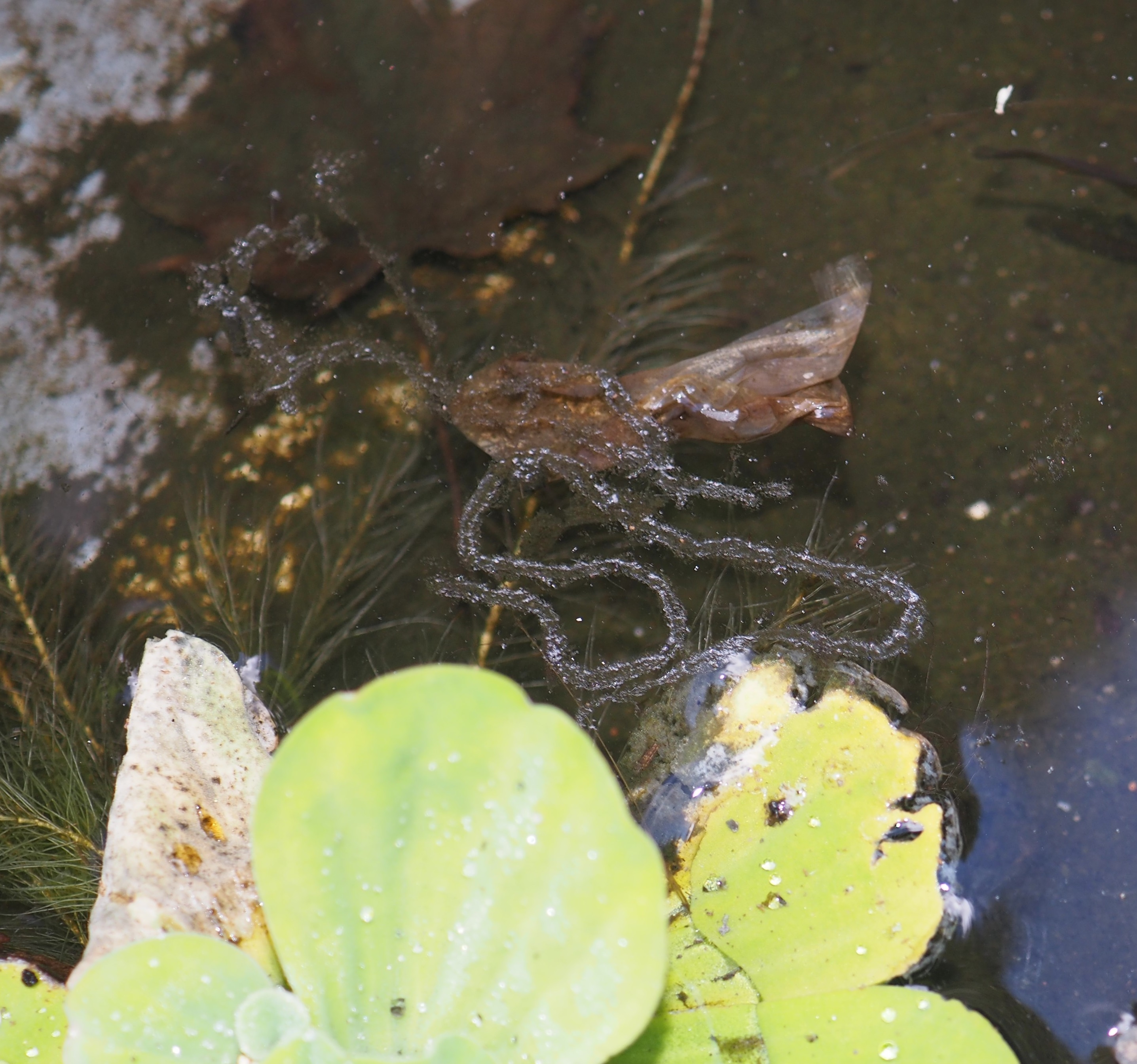

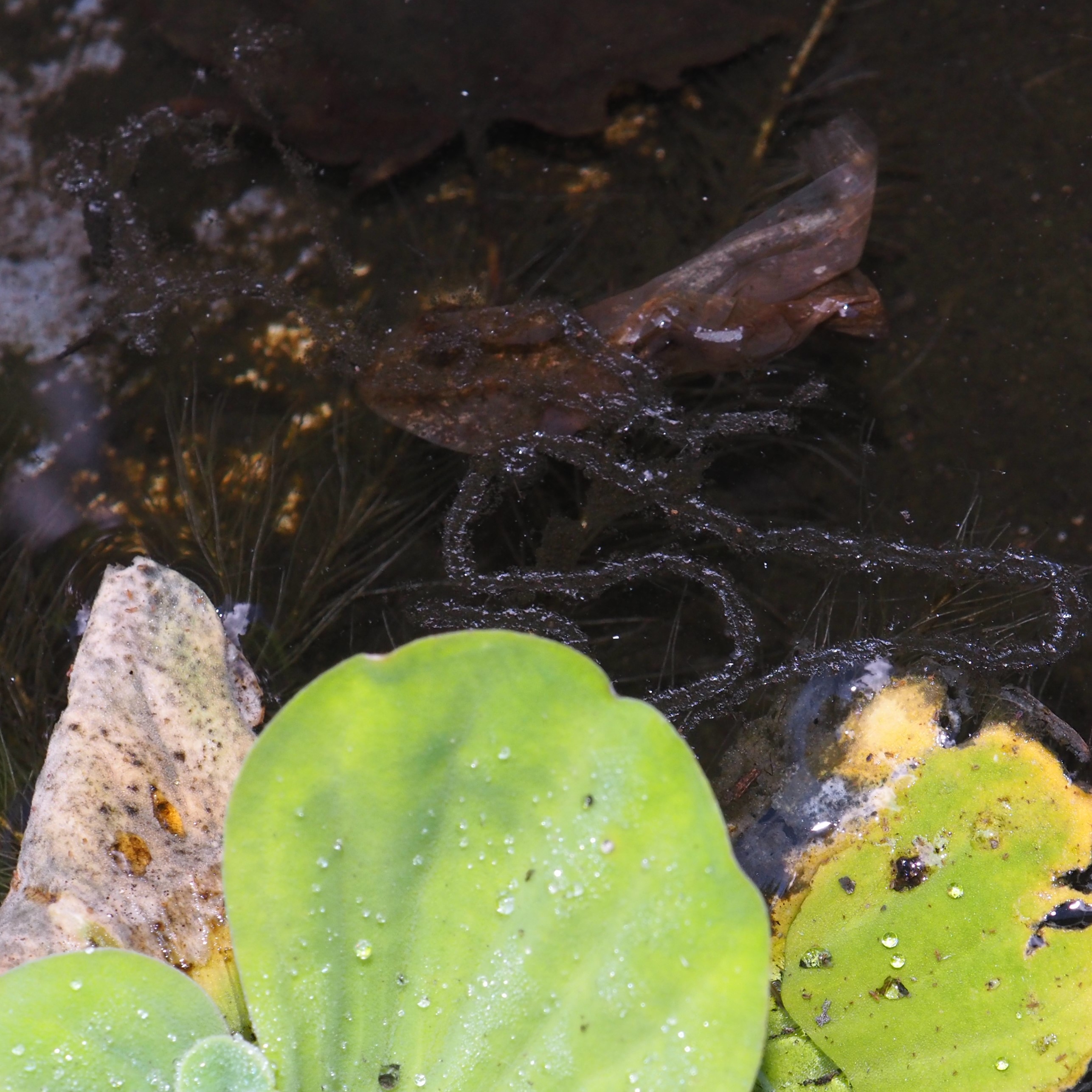
I think this sole Wasp is an Eastern Yellowjacket. I'm sorry, this is really the only one I caught this week. It was lying outside the Shop door asleep one morning - must have gotten cold overnight. Picture 2 is of the escargots at my friend Susan's Birthday Party. It was the first time I ever ate them. True to what "they" say, they taste like butter and garlic but not like chicken. Finally, I ran across this picture the other day. It's a photo of a photo I took with my Baby Brownie Camera that I got when I was about 10, and is the best (indeed, only) image I was able to get of most of a Praying Mantis as it headed up my shirt.
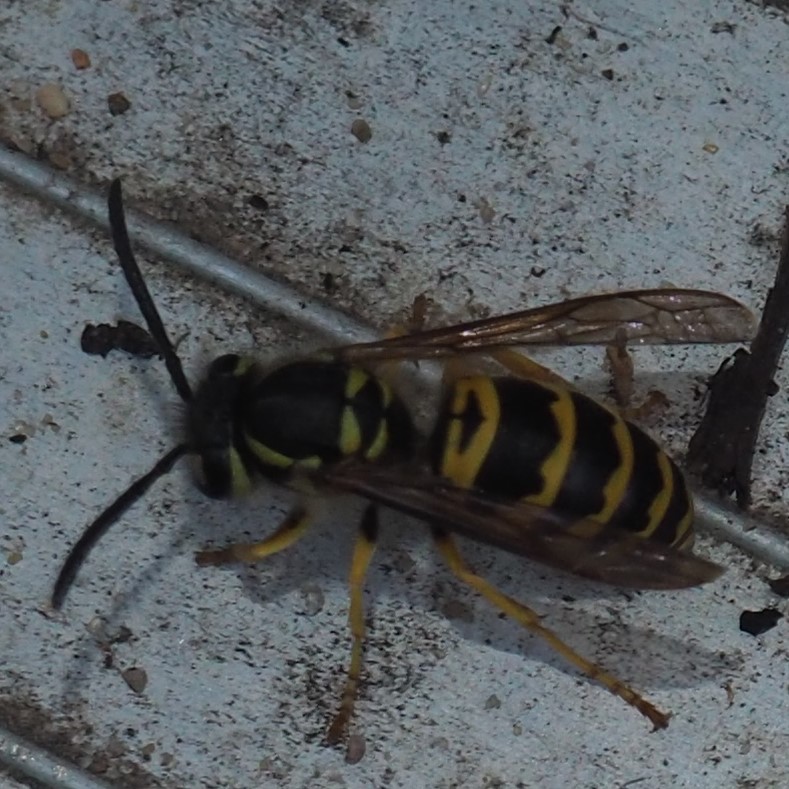


Finally, the Pond on September 27 with a couple of Water Lilies and a shadow of a fish or two. I still don't know when I'm going to be able to have the Pond redug and relined and the fishes and lilies safely ensconced in the new improved Pond. But it will happen soon, I think.
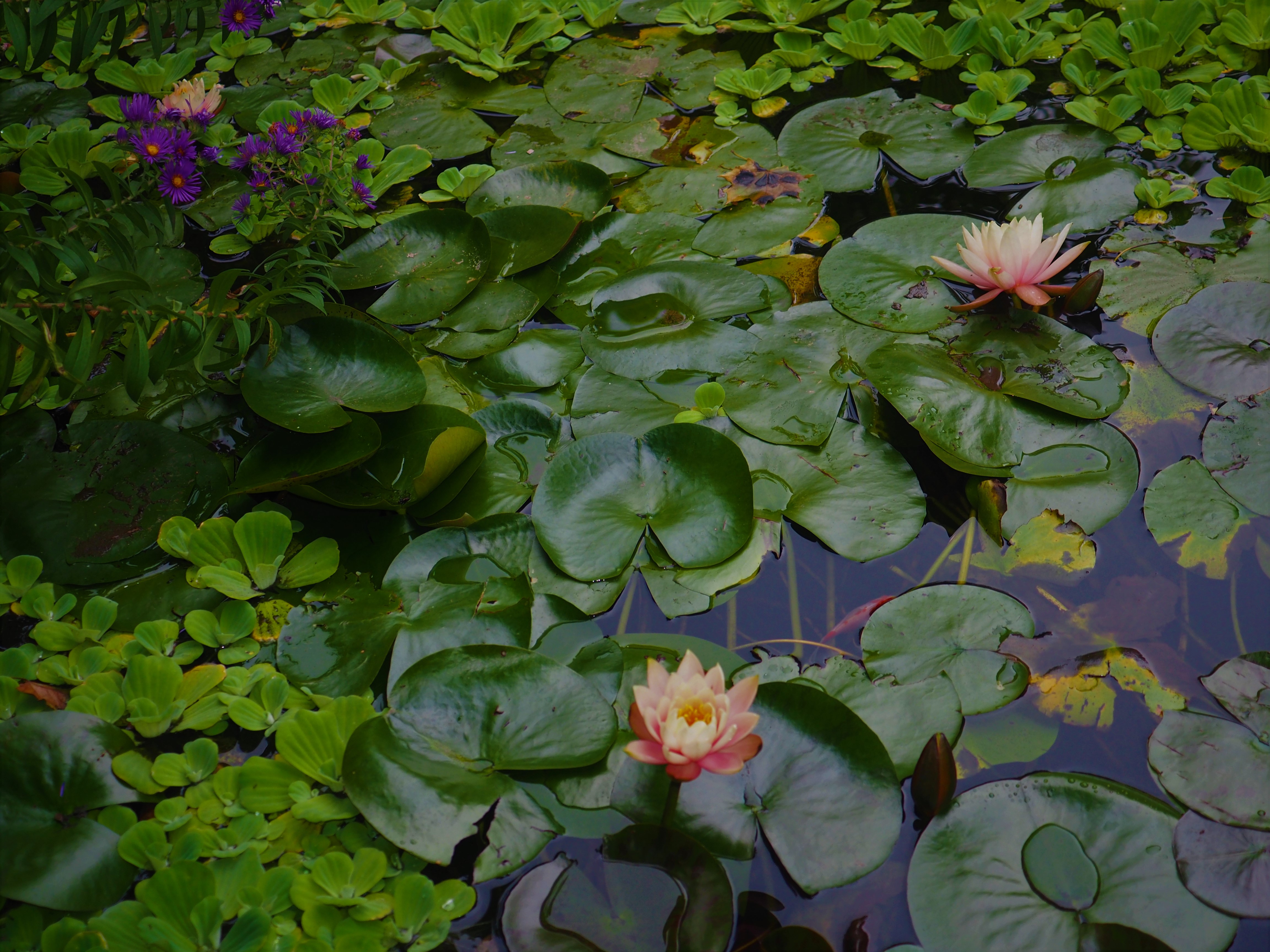
Here we are again. I'm hoping that everyone is doing well as can be expected and a good bit better! Time seems to be going very fast now, no matter how I drag my feet to slow it down. But there is still so much to do, so much to read, so much to ponder upon. I hope you have a lot to do to keep your minds happy and at some ease. So
Love, Martha
Back to September 27, 2020
Forward to October 11, 2020
Back to main menu
copyright Martha O'Kennon 2020

















































.jpg)















































